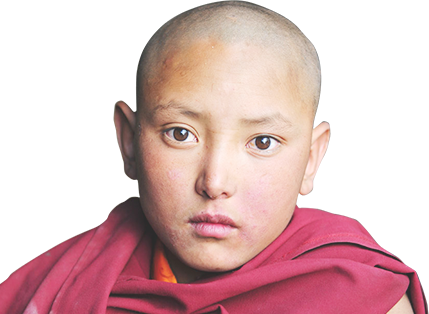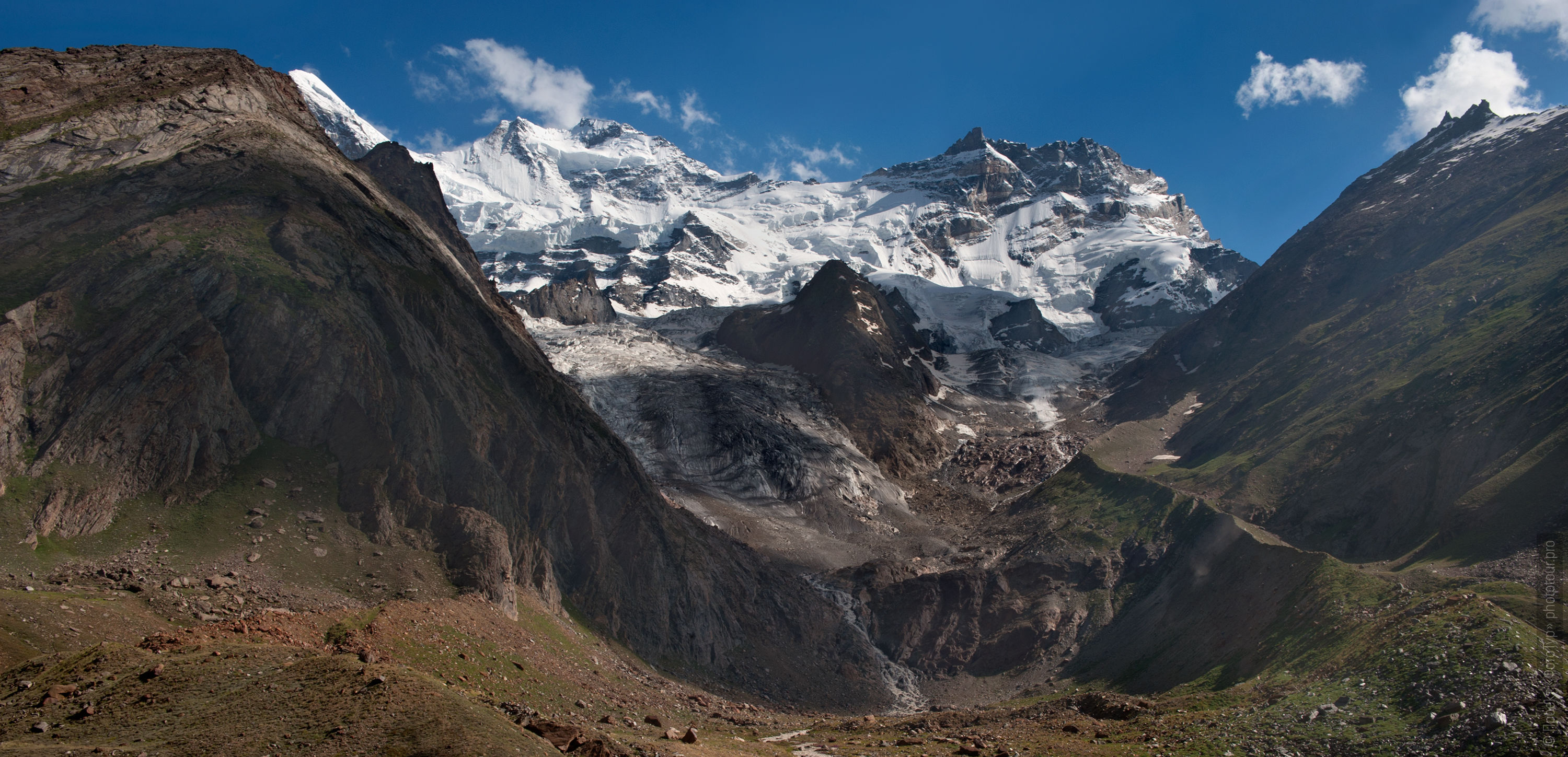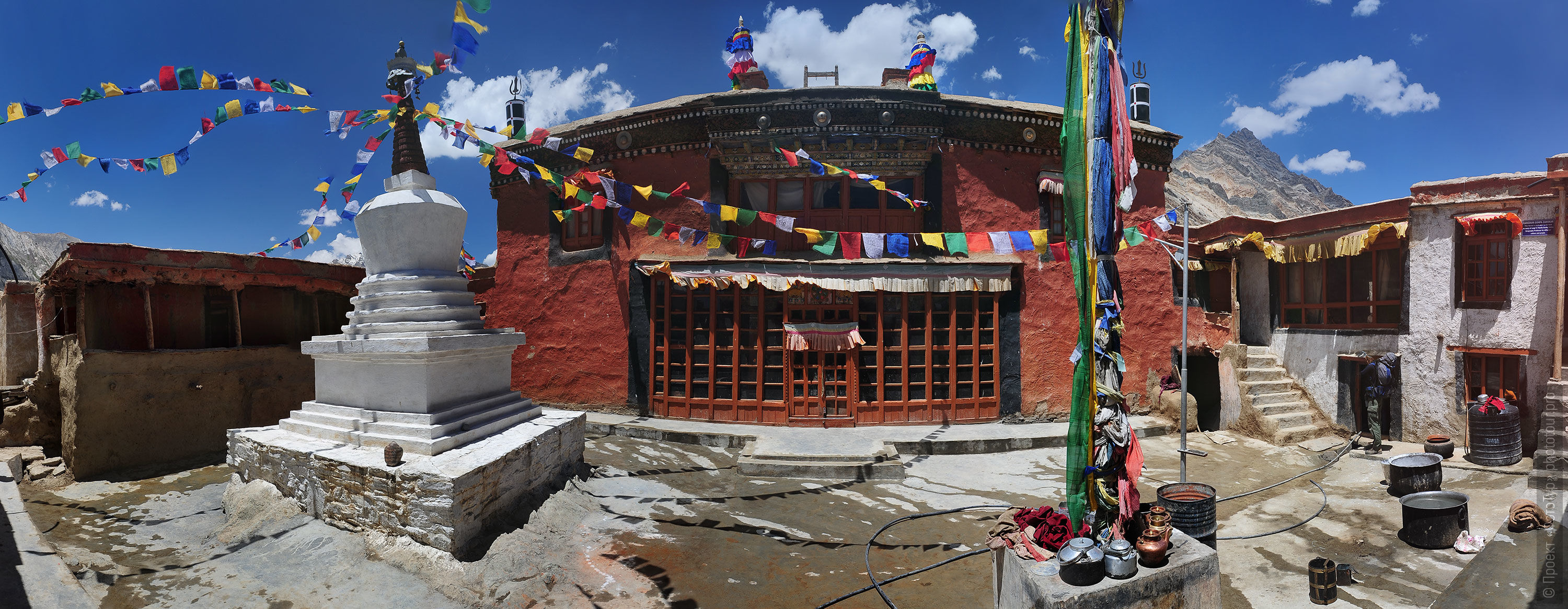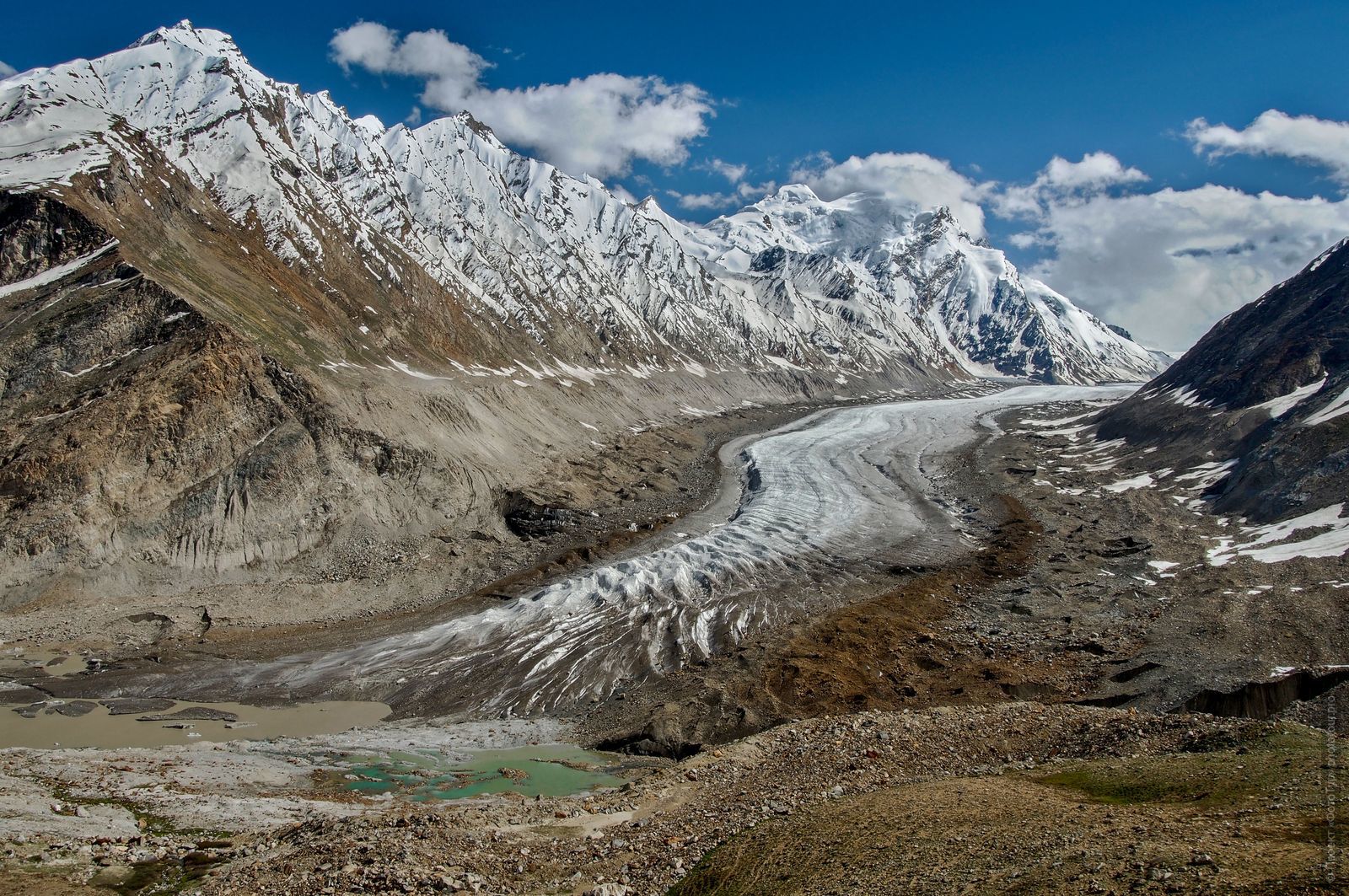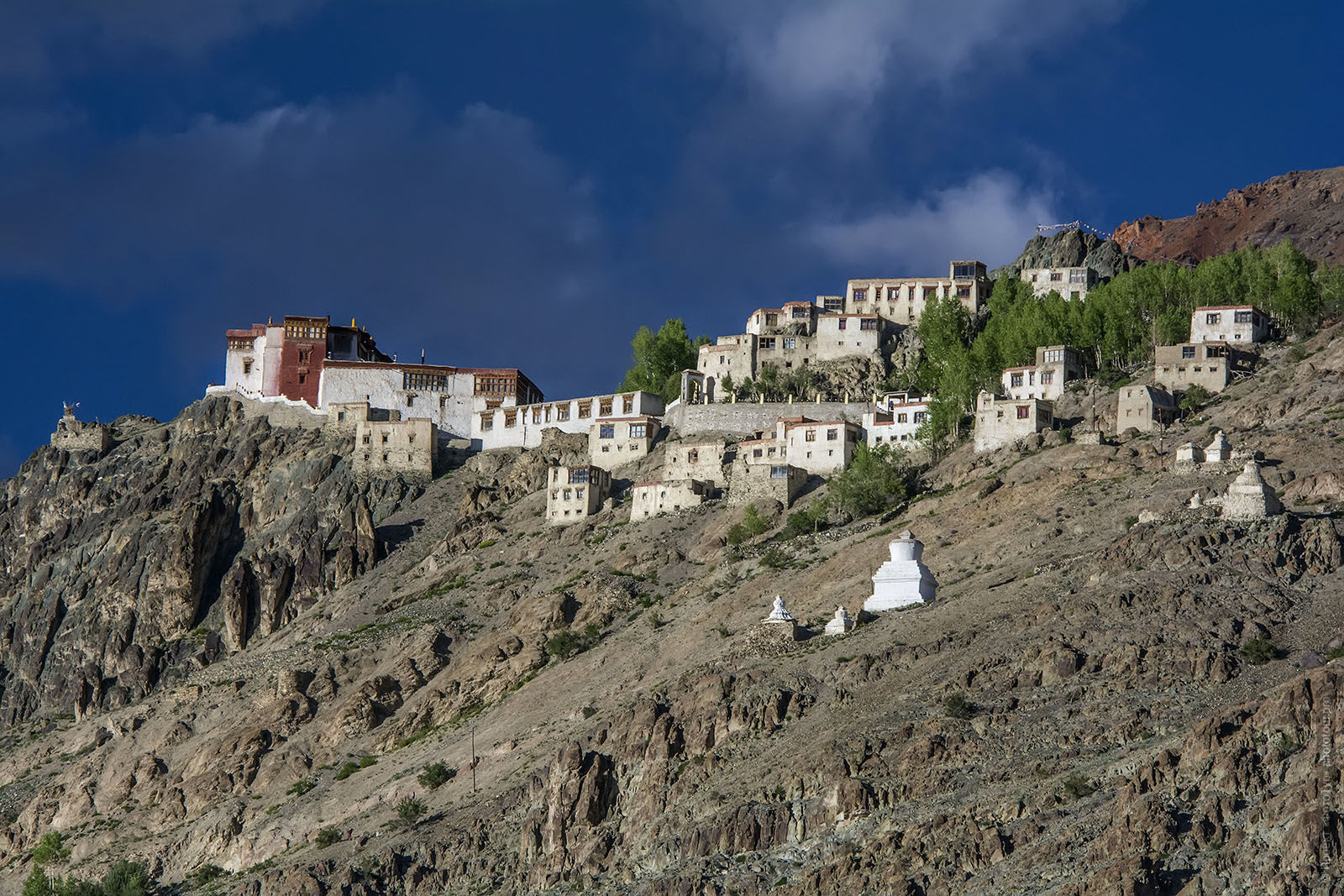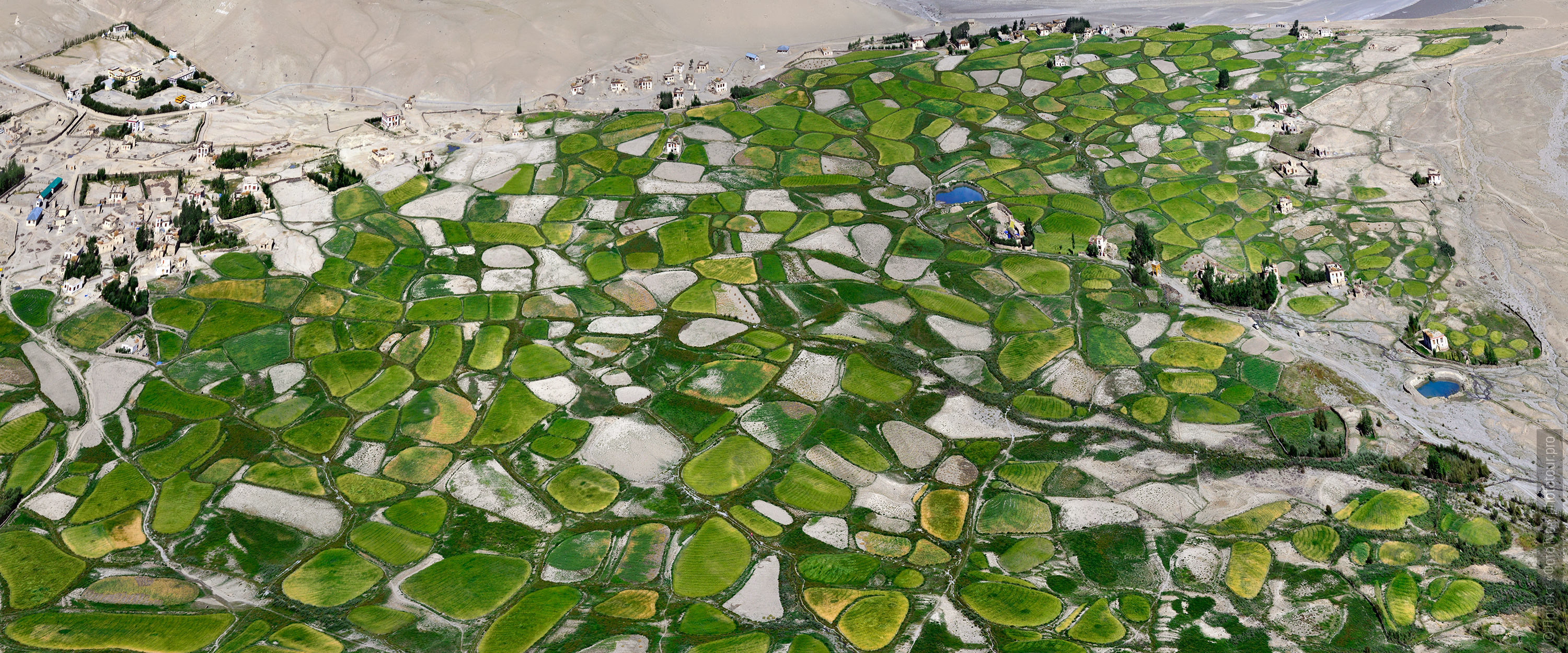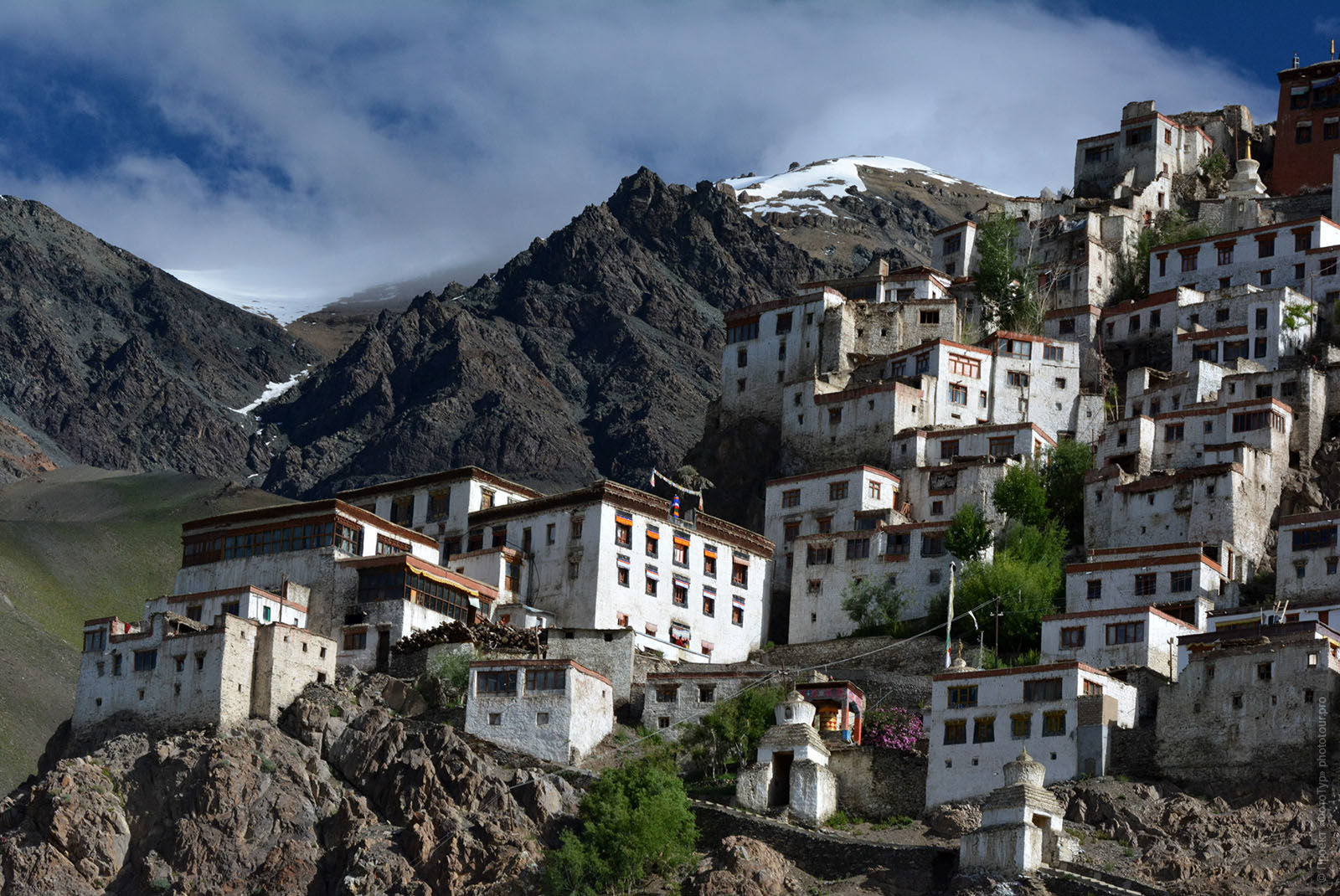The Booking of your participation in any journey takes place in three stages:
First step: Filling the application form for participation in the tour. Be sure to include your full name, We work officially and all accounts are registered. Please write your contact so that we have the communication wit you. After your application come to our website - the site administrator will send you a bill at your name for a advance of the tour. Maximum response time: 6 hours. Usually responsible for 1 hour.
Second stage: The reservation to participate in any tour takes place when you make the advance payment of 30% of the tour price to the account of an Indian travel company INCREDIBLE HIMALAYA. The advance is transferred via bank payment systems in any bank, account details will be sent by the administrator to e-mail of participants after getting the application form for participation.
ATTENTION Booking the tour takes place only when the advance payment transferred. If, after receiving of the invoice for advance payment, you do not make a payment within three working days, your application form for participation is automatically canceled by site. If you still want to participate in the tour, you have to apply the form again. When we receive an advance on our bank account we sent payment receipts confirming your participation, as well as a contract for the provision of travel services on this tour. The administrator sends you the electronic copies of receipts and contracts with digital signature and seal by e-mail and if necessary - to the postal address - the original documents. The remaining amount is payable as ayou arrive at the beginning of the trip, in India.
The third stage: Preparing for the journey. We also have a verbal communication on Skype with members of our travels. 2 weeks before the tour we gather the whole group in Skype and discuss preparations for the journey. Also welcome verbal individual consultations on Skype, it helps us to answer all your questions maximized. Because the most of the year we are in India, the main communication with us is Skype.
Attention! You don't need to register on our site to join the tour. If you are unable to fill the application form, please just send your application in letter (free form) - by mail: [email protected]
Attention! If you have not received a response to your letter within 6 hours (maximum response time for a request), please look at the spam folder. Perhaps, our letter got there by mistake. We always reply to requests in a maximally short period of time.
Photo tour to empyreal Kingdom of Zanskar.
Day 1, July 17: Delhi - Leh (flight). The acclimatization to the altitude. Walking through the Old Town.
Day 2, July 18: Spituk gonpa. Puja-blessing for the road. Spituk village.
Day 3, July 19: Leh - Alchi - Kargil.
Day 4, July 20: Kargil - Rangdum.
Day 5, July 21: Rangdum -Padum, Zanskar.
Day 6, July 22: Stongdey Gonpa. Buddhist mystery play Stongdey Gustor, day 1. Cham Dance.
Day 7, July 23: Stongdey Gonpa. Buddhist mystery play Stongdey Gustor, day 2. Cham Dance.
Day 8, July 24: Free day in Padum.
Day 9, July 25: Landscape photography on the route Padum - Rangdum.
Day 10, July 26: Zangla Valley. Zangla Gonpa monastery. Palace of the King of Zangla. Zangla village.
Day 11, July 27: Padum – Muney Gonpa, Muney gonpa, Bardan gonpa.
Day 12, July 28: Zongkul gonpa and Sani gonpa.
Day 13, July 29: Stagrimo gonpa, the Palace of HH the Dalai Lama in Zanskar, nunnery Dorjedzong.
Day 14, July 30: Distant villages of the Padum Valley, Zanskar.
Day 15, July 31: Free day in Padum.
Day 16, August 1: Karsha Gonpa Monastery. Buddhist mystery Karsha Gustor, day 1. Cham Dance.
Day 17, August 2: Karsha Gonpa Monastery. Buddhist mystery Karsha Gustor, day 2. Cham Dance.
Day 18, August 3: Padum – Kargil.
Day 19, August 4: Kargil – Leh.
Day 20, August 5: Leh - Delhi (flight).
Optional - tour around Delhi, evening transfer to the airport and return home.
Discount on last place - 10%.
Cost of the tour at a discount: 1905 USD.
Reservation for participation in photo tour in Zanskar occurs when you make an advance to the account of an Indian travel company PROJECT PHOTOTOUR PRIVATE LIMITED of 20% of the tour price - 423 USD.
Advance payment is transferred by participant of photo tour via bank payment systems in any bank to the account of a travel agency Project PhotoTour, details are sent by the administrator after receiving an application for participation in the photo tour.
After you pay the advance payment a receipt confirming the payment is sent to you and confirmation of the booking of your participation in the tour in Zanskar, and a contract for the provision of travel services will be sent to you too.
The remaining amount is paid as a participant arrival at the place of the tour, in this case - on arrival at Leh, Ladakh.
1. Transfers to / from the airport to the hotel in Leh.
2. Move around the route (from the ladder to the ladder of the planes) in the comfortable cars.
3. Jeep-tours in Zanskar.
4. Double accommodation in hotels, guesthouses and campsites throughout the photo tour in the valleys of Ladakh and Zanskar.
The single accommodation is possible, $ 480 co-payment for the entire photo tour.
5. Information support during all the route by the local russian- or english speaking guides.
6. Photo-guide.
7. Excursion support along the route with local russian- or english speaking guides.
8. Participation in the Buddhist Mysteries Stongdey Gustor and Karsha Gustor in gonpas Stongdey and Karsha in Zanskar valley.
9. Workshop on introduction to the culture of Tibetan Buddhism.
10. Master class on photography: "Features of ethnographic photography in the Zanskar valley."
11. All fees and taxes along the route.
1. Flight to Delhi airport from the country of residence and back.
2. Flight Delhi - Leh - Delhi. The estimated cost of $ 120.
Attention! These tickets are bought immediately after the advance payment for participation in the photo tour:
the Administrator of the Project PhotoTour assists in the purchase of tickets at the lowest cost.
Just keep in mind that as the earlier tickets we buy, the cheaper they are.
3. Entrance fees to the monasteries and monastic buildings, the order of $ 20 on all the time.
4. The cost of permits in the closed border zones in Zanskar valley, about $ 10-20 for a permit.
The cost of the permits are published on Kargil tourist center in the beginning of May each year. That is why we do not include these costs in the price of the tour: they will be available in May.
5. A tourist visa to India $ 60, made out online for 7 days before arrival to India (for the countries included in the registry), the others get visa at the consulates in the prescribed order.
The information about tourist visa in India.
6. Meals during the photo tour: about $ 200 for the duration of the trip.
7. Medical Insurance: is bought individually by each participant in the place of residence.
8. Tips for drivers, offerings in Buddhist monasteries.
9. Anything that is not specified in the paragraph "The price of the photo tour includes".
The large photo tour in Zanskar is opened for photographers and travelers from all over the countries in the world, the focus is aimed at modal travel photography.
For participants in the large photo tour in Zanskar is recommended to obligatory reading:
Guidelines and rules for travelers in Ladakh, Zanskar and Spiti (Little Tibet).
BOOKING the photo tour In Zanskar is possible until 17 of June 2016.
But the booking can be stopped before - as soon as collected a group of 8 people.
If you want to go to a photo tour in Zanskar, please book your place for participation.
Minimum number of participants in this group - 8 people.
Maximum number of participants in this group - 10 people.
The level of comfort in photo tour in Ladakh and Zanskar is quite enough.
Accommodation in photo tour on the route in Zanskar:
In Leh: hotel with hot water, a bathroom and toilet facilities in the room.
In Kargil: guest house, conveniences on the floor, hot water brought in buckets. Clean and comfortable. Food is prepared in local family: delicious and very satisfying.
In Rangdum: guest house near the house of a local resident not far from the Rangdum gompa. Facilities are out of house, no hot water. Rooms are relatively clean as it possible at the altitude of 4000 m.
As an option – staying in the camping, with similar conditions. It is necessary to have personal sleeping bag.
In Padum: guest house, hotel with hot water, a bathroom and toilet in the room.
Attention!
In Padum it is possible to stay in the private extra class hotel.
The conditions there are much comfortable than in ordinary hotel: large bright rooms, its own power station, guaranteed electricity and hot water, daily cleaning, and sometimes - the Internet connection.
For Zanskar it is really extra-class - an unusual and luxurious.
The number of rooms is limited: just 9 rooms. Surcharge is 40 USD per day.
If you want to ask the questions about the organization and participation in the large photo tour to Zanskar, please contact:
Phone:
+ 91 94 19 274 735 (India) - Ilona Kryzhanovskaya, the director of the Project PhotoTour, India.
+ 7 977 301 67 46 (Russia, India) - Maxim Savchenko, the direction of extreme festivals in Project PhotoTour.
e-mail:
[email protected] - Ilona Kryzhanovskaya, the director of the Project PhotoTour
[email protected] - Nina Lozenko, the manager of the Project PhotoTour
[email protected] - Maxim Savchenko, extreme festivals Project PhotoTour.
A team of organizers working on the photo tour in Zanskar:
Ilona Kryzhanovskaya: photographer, ethnographer, ethnographic photography, genre photography, subcultural practice, the construction of the myth in photography.
Maxim Savchenko: direction of extreme festivals in Project PhotoTour.
Kristina Tsurkan: Project PhotoTour guide, designer and traveler.
Nina Lozenko: Manager and administrator of Project PhotoTour.
Our local Ladakhi and Zanskari English-speaking guides, who carries Zanskar culture, the team of Project PhotoTour.
The team of drivers-guides working with us along the entire route.
We recommend to check out the program of a large photo tour in Zanskar carefully, as well as to pay attention to individual preparation and to see the following articles about the photo tour:
View photos from our photo tours to Tibet.
View photos captured during the Buddhist mysteries with Cham dancing.
Photos of our tours to Zanskar:
Photo tour in Zanskar, 2012.
Photo tour in Zanskar, 2013.
Photo tour in Zanskar, 2014.
Photo tour in Zanskar, 2015.
The first photos from Large photo tour in Zanskar, 2015.
Perhaps the name of the tour says almost everything: photo tour passes through the most distant, inaccessible areas of the Little Tibet, includes tracking, designed specifically for photographers, and allows you to explore the nature and culture of Tibetan Buddhism in Zanskar more fully.
This photo tour is unformat on many criteria, beginning from the duration (20 days) and ending with the fact that we will visit and take pictures in very exotic places, and sometimes Tibetan lamas will be our guides.
Zanskar Valley - The Lost World, the Buddhist kingdom lying in the heart of the Himalayas. Zanskar is one of the highest and hard to reach Himalayan region in Northern India.
But precisely due to its isolation from the outside world Zanskar still preserved its original way - for example, it is still preserved polyandry - when all the brothers of one family marry a girl and live as one family.
Zanskar - this amazing Tibetan world through the looking glass: the royal family is still living there and the King Zangla essentially controls everything that happens in Zanskar, he is highly educated and wise man.
Here the Buddhist mysteries in the monasteries are shrouded in a sense of mysticism, sometimes it seems that the space is shifted to some other reality and Mahakalas - are no masks, but the creatures who are close - reach out and you can touch them..
Everything remains the way it was centuries ago.
Photo tour is oversaturated with all kinds of photographic styles: the ethnographic, landscape, portrait, genre, animalistic, still life and even macro-photography.
During a photo tour we will visit two sacred ceremonies with dance performance - Cham (Dance of the Masks) in Buddhist monasteries in Zanskar.
Travel is primarily for a very enthusiastic photographers.
And our guests bring personal exhibitions from such journeys.
A large team of guides works with us during all these photo tours, the guides are the local culture-carriers and they will tell a lot about the cultures in which we wandering.
Not only photographers can take a part in this tour to Zanskar, but simply lovers of travel, but in this case it is necessary to consider in advance that the travel program is designed according with the regime of shooting time.
Most of the photos given in the description of a large photo tour to Zanskar, clickable to large in size, simply click on the picture and it will be opened in a new window.
Day 1, July 17: Delhi - Leh (flight). Acclimatization to the altitude. Walking through the Old Town.
Arrival to International Airport of New Delhi.
Transfer from the International airport to Delhi Domestic Airport (inside the airport territory between International and Domestic Terminals by free shuttle bus), and flight from Delhi to Leh.
It is common practice in our photo tour in Little Tibet: flights, in which the participants arrive to Delhi airport, usually arrive in the terminal D3 from 2 to 5 a.m., immediately move by the shuttle bus to the terminal D1 and fly to Leh in the morning.
We will take tickets for flights from Delhi - Leh so that the time between the international and domestic flights will be 3-4 hours at least.
The flight Delhi-Leh is a very exciting photo action, airplane flies over the beautiful peaks of the Himalayas.
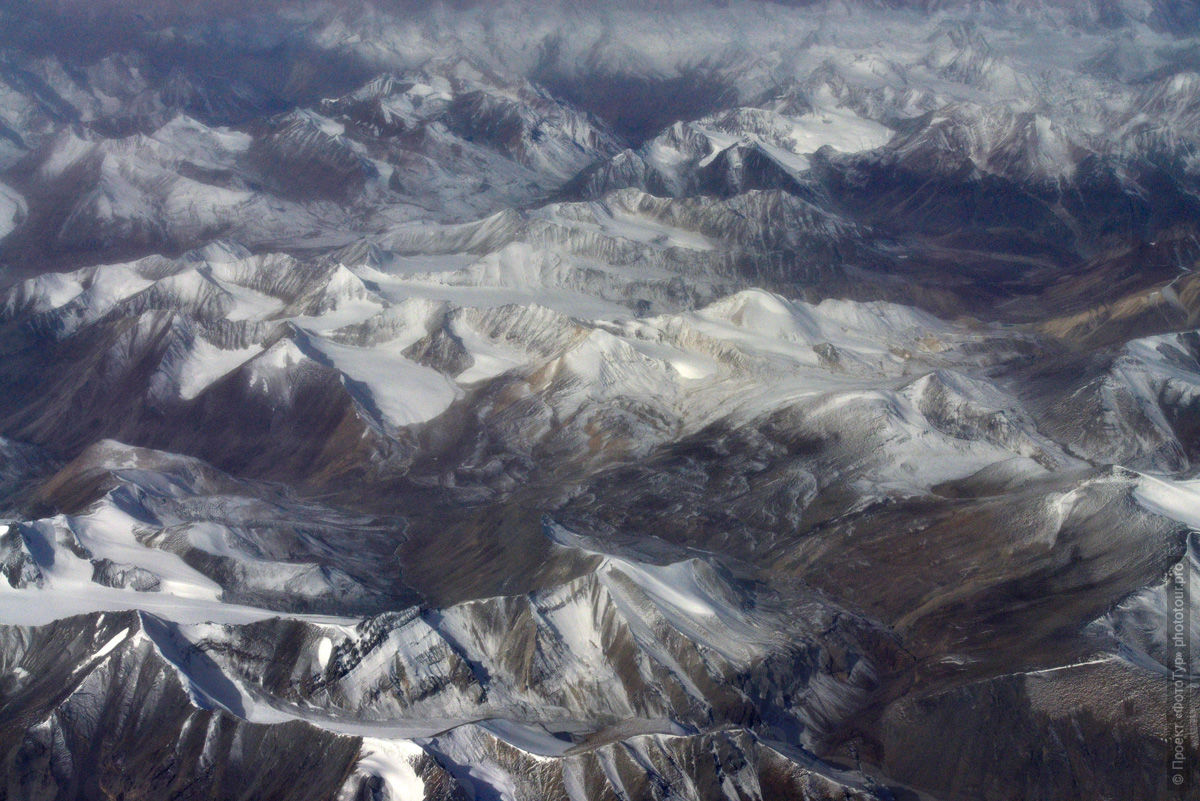
Photography of air flights Delhi-Leh can be found here:
Homecoming. Live Journal blog of Ilona Kryzhanovskaya.
We returned to Ladakh!
Air flight from Delhi to Leh, Ladakh, April, 2015.
Arriving to Ladakh, plane turns over the valley and landing in the only airport in the valley - in Leh.
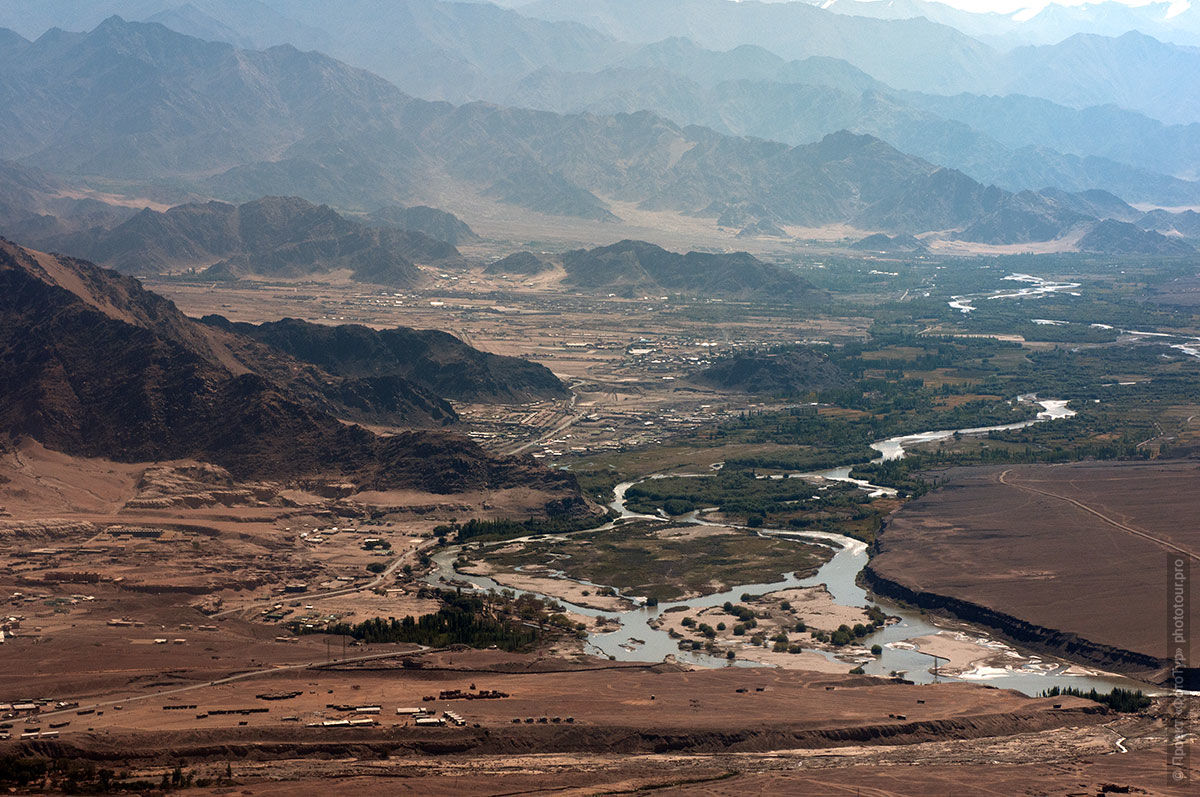
Arrival to Leh. Immediately at the exit of the Leh airport the guides meet participants with a sign PHOTOTOUR.
Transfer to the hotel, breakfast.
Leh is located at an altitude of 3600 m.

And on the first day it is very important for photo tour participants to pass the correct high-altitude acclimatization: they get instructions on acclimatization, drink plenty of fluids, rest upon arrival at the hotel for the first hours.
After acclimatization rest at the hotel we go for a leisurely walking for adaptation through the narrow streets of the Old Leh: clay houses, Buddhist stupas and prayer wheels.
Leh Old Town was declared a UNESCO World Monuments Fund.
The walking will be finished at the Monastery Soma Gompa, in the central part of the Old Leh.
In the evening - a master class in the introduction to the culture of Tibetan Buddhism.
Hotel in Leh.
Day 2, July 18: Spituk Monastery. Pooja-blessing for a road. Spituk village.
Today is the second acclimatization day in Ladakh, and we will spend it in a quiet measured moving: we go to Spituk Gonpa, situated on a high hill at 8 km from Leh.
Visiting the Buddhist monastery Spituk: this gompa where we make wishes that come true.
Traditionally many of our photo tours begin from Spituk Gonpa, and here we make wishes and get blessing from Lama of High Initiations for the good journey, we visit blessing puja, which is conducted just for our groups.
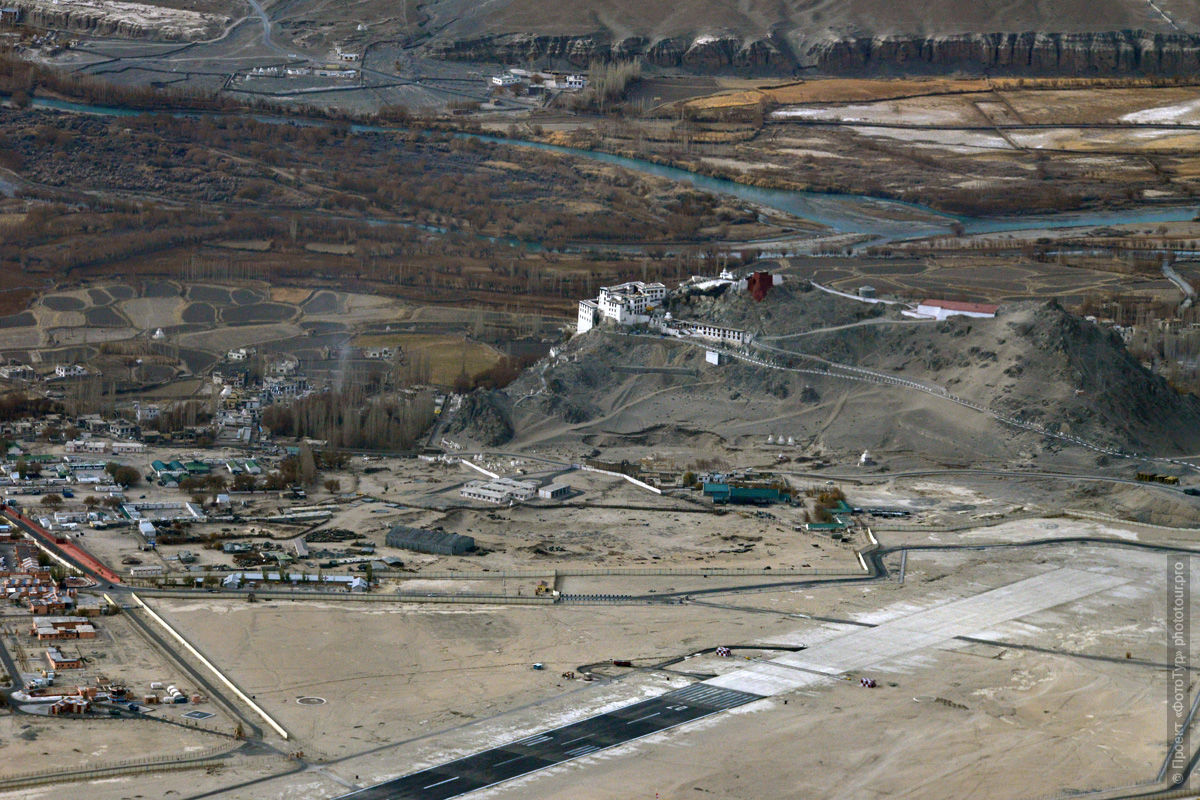
Spituk Gompa is a Buddhist monastery of the Gelug tradition, and it is situated 8 km from Leh.
Spituk Gompa founded by Aud-De, the elder brother of Lha Lama Changchub Oda, in the 11th century.
Aud-De chose a place near the Lech and built three sanctuaries at first, and after - the monastery.
The name "Spituk" - an exemplary, given by Rinchen Zangpo (Lotsawa), who visited this gompa and was surprised by his godly community.
At first, the monastery entered the Kadampa school. Dharmaradzha Takspa Boom - Lde Lama Lhavang put a lot of efforts to help the monastery, and he brought it into the Gelugpa school, the teaching of the great Tszonkhapa.
Stok Gompa, Sankal Gompa and Sabu – obey to Spituk.
The monastery statues: Buddha Amitayus, Mahakala. The images: Tszonkhapa, Takspa Boom Lde. The throne intended for the Dalai Lama installed in dukhang (assembly hall).
There are five rows of seats for Lamas on each side and shelves with Tibetan Buddhist canon in dukhang.
Behind the main hall there is a small room with images of Tsonkhapa, two of his students, Tara and Buddha. The thangkas (some of them are brought from Lhasa after the Chinese occupation), ancient masks, antique arms stored in this gompa.
Spituk Monastery is one of the most beautiful monasteries of Ladakh valley.
After lunch we go down to the village Spituk, ethnographic photography in the village of Spituk.
Hotel in Leh.
Day 3, July 19: Leh - Alchi - Kargil, 234 km.
Today, about 6 o'clock in the morning, our journey to sky-high Kingdom of Zanskar begins.
On the first day on the road to Kargil we also visit Alchi monastic complex and drive through the beautiful valley of Ladakh – Lamayuru.
Ancient Alchi monastery complex is one of the most important cultural and historical treasures of Ladakh and the entire Buddhist world.
Alchi is the center of Buddhist art and one of the main attractions of Ladakh.
Construction of the monastery associated with the name of the legendary Ringchen Zangpo, the great translator and religious leader, his biography says that there were brought 32 skilled sculptors and woodcarvers from Kashmir for the construction of the monastery.
Three ancient temples form the main part of the monastery, the most revered of them are decorated with paintings by Kashmiri artists.
There is Dukhang (Assembly Hall) in the old temple, where is the main relic - the image of the Buddha Vairocana, and four other Buddhas in meditation.
The second oldest is Sumtsek temple, here are huge statues - Avalokiteshvara (it is painted with images of palaces and shrines), Maitreyea (decorated with scenes from the life of Buddha) and Manjushri (covered with images of 84 masters of Tantra).
Nearby is Gonpa with five images of Green Tara (Consoler and defender). There are also many frescoes, sculptures and paintings in other temples of the monastery.
It is noteworthy as well the location of the monastery - it is nestled in the valley of the river in contrast to other monasteries situated on hilltops.
If we compare the monasteries of Ladakh with a priceless necklace, the Alchi perhaps is the most unusual pearl in the thread of Time.
Further, the numerous stops in the Lamayuru valley and on the Fotu La pass are waiting for us: there are unearthly landscapes here, during the first day the road landscape photography will occur in the mode of non-stop.


Here you can see photos from the valley Lamayuru: Lunar landscapes of Lamayuru.
In the evening we arrive at Kargil and stay at the guest house in one of the nearest villages on the road Kargil - Padum.
Dinner and rest.
Guest house in Kargil.
Day 4, July 20: Kargil - Rangdum, 125 km.
Early in the morning we go to Rangdum.
The road passes partly along the river Suru, here you can see two grand peaks - Kun and Nun, 7135 and 7427 meters above sea level accordingly. These twins are the north-eastern gates of the principality of Zanskar.
To write about what an amazing way - is meaningless, it is necessary to pass this way, to feel and see.
By the way, this road was built only in 1980, before that time the communication between Zanskar and the outside world was the only pedestrian.
This road is amazing in every sense of it:
- Purely kinesthetic - yes, the strongly shakes are here all the time, the road passes along the river and periodically in channel. The local people say about this roads - jumping.
By the way, this road is the most difficult in comparison with the all the roads of Ladakh and Zanskar, which allows Zanskar to remain the sky-high place until this time, thats why this kingdom is almost untouched by civilization.
Last season King Zangla shared dreams that in 3-4 years a normal road will appear in Zanskar...
We hope that this will happen much later and allow Zanskar to be in its true primordial form for centuries.
- Visually it's easier to list what we see on the road: glaciers hanging over the road and down to the parking places of rare nomads, herds of yaks, alpine lakes, wild rose bushes, flowering literally in the snow, mountains stunning in their striped multicolor.
Come to Randum.
The first thing that catches your eye is the glades of Edelweiss, we wolk on Edelweiss - well, just nowhere else to step.

We stop in a guest house in the Rangdum village or in the camping, have lunch and go to the Rangdum gompa- the best place for shooting in the valley, the panoramic views of the surrounding area from the roof of the monastery are seen.
Also we will attend the evening puja in the Rangdum gonpa.
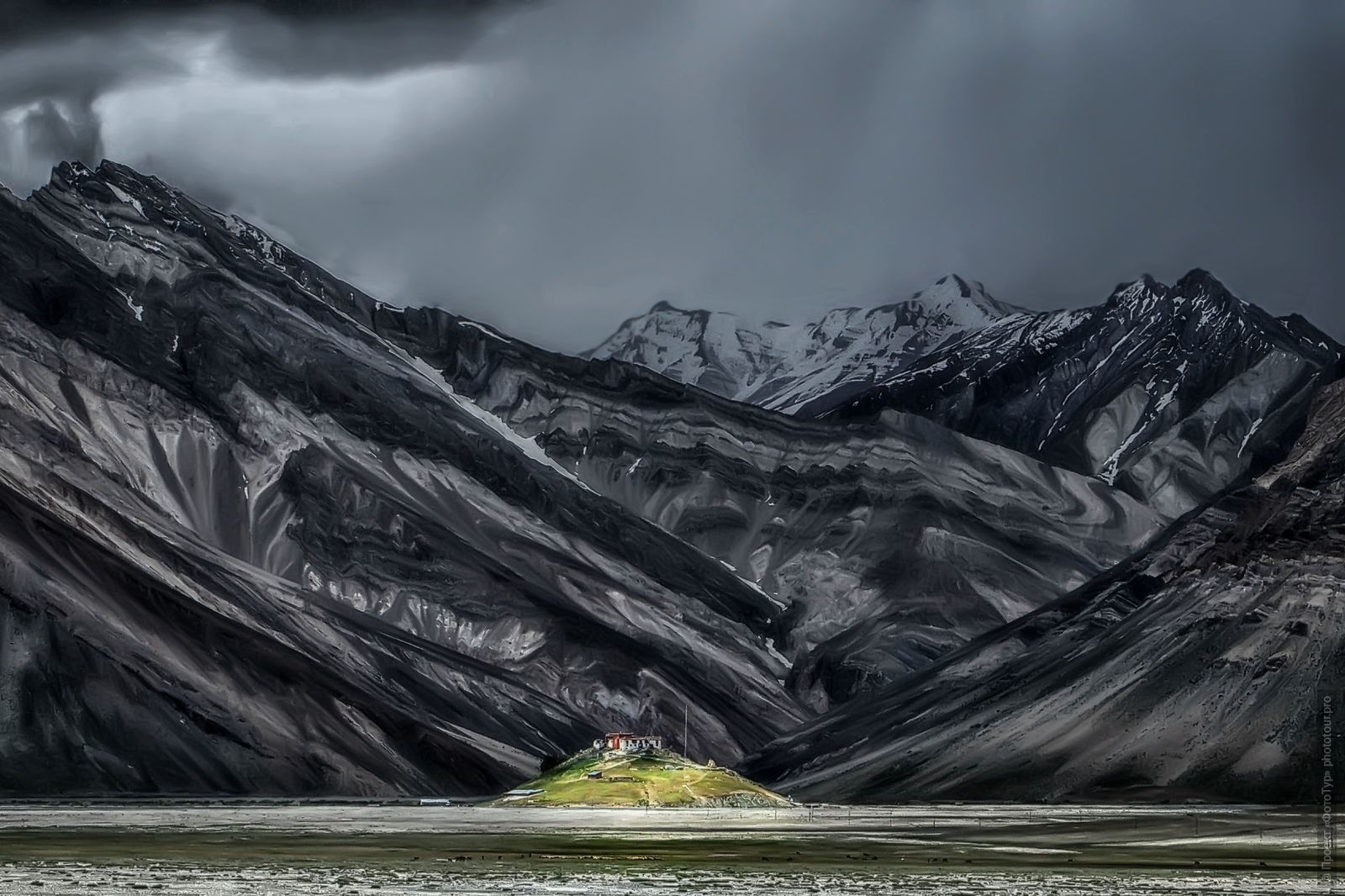
Rangdum is the farthest and most isolated small settlement in Suru Valley.
Rangdum Gompa is a Buddhist monastery (XVIII century) located in 5 km from the settlement - it is situated on a hill and serves as an outpost on the way to the valley.
This is a typical example of a monastery-fortress, it's a good place to survey the surroundings.
The monastery has a small museum with interesting Buddhist relics, desk with photos of lamas from the monastery, made in the last century.
Underground passages removed from the Gonpa monastery to the base of the rock on which the Rangdum Gonpa is situated.
Rangdum Gompa is not often visited by tourists because of its remoteness from the other settlements, but we will use the case and it's worth it: the monastery is wonderfully cozy and beautiful.
Accommodations in a tent camp near the Rangdum monastery.
There are Buddhist relics in the monastery and a few dozen monks lives there.
Guesthouse or camping near the Rangdum gonpa.
Day 5, July 21: Rangdum -Padum, Zanskar, 120 km.
For those who want - morning puja in the Rangdum gompa at 4.00 am.
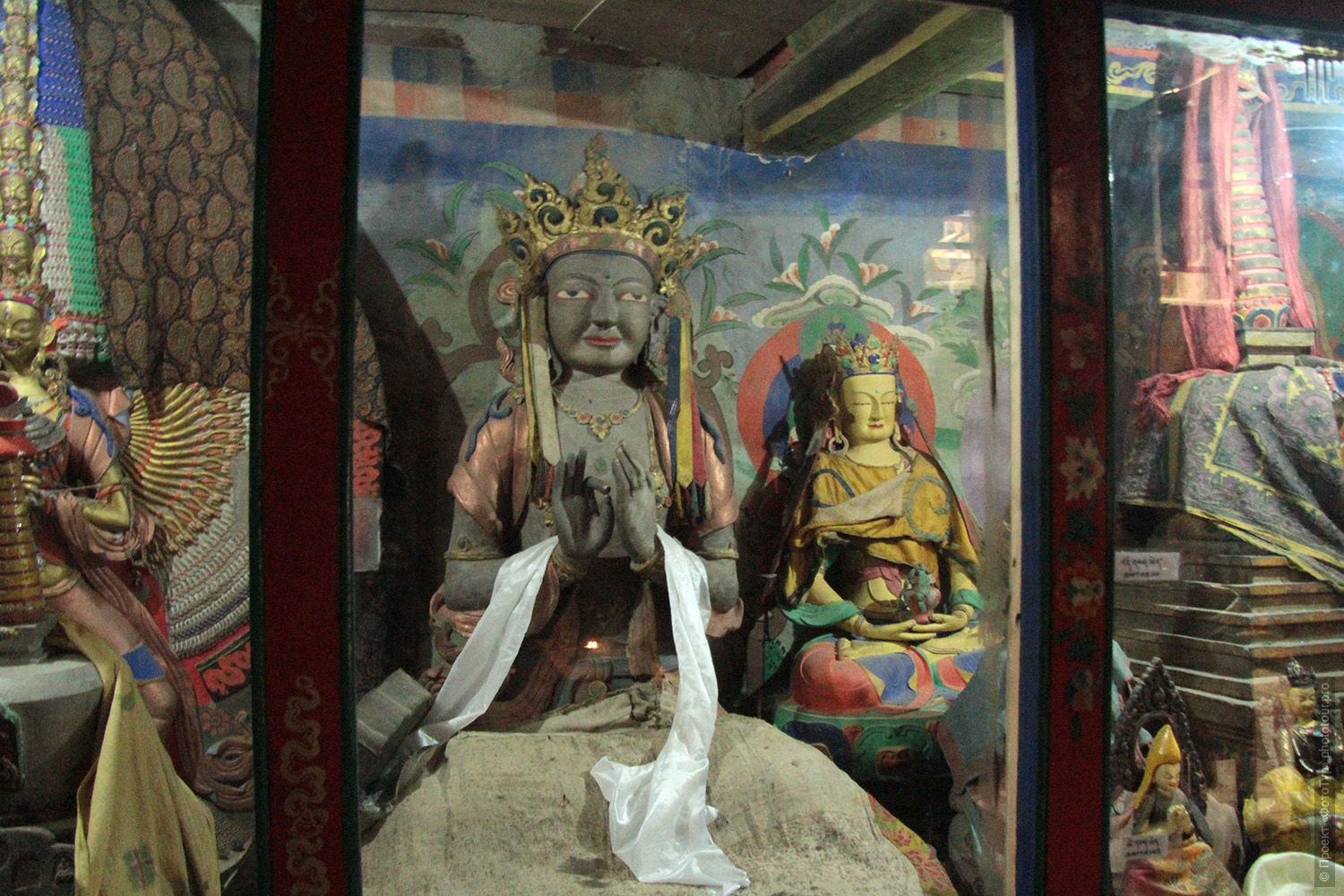
The others participants wake-up at 5 am, have breakfast and we go for a morning photographing by the road Rangdum - Padum, last segment of our journey to Zanskar.
The whole day we will spend on the road.
Numerous "landscape" stops are planned.
Today we are going to overcome the pass Penzi La (4440 m).
Penzi La Pass often is called the gateway to Zanskar, it connects the Suru Valley, where is Kargil, and Zanskar valley.
A highway of 240 km in length goes through it, connecting Kargil and Padum.
The road is really very beautiful: the numerous glaciers, trough valleys, meadows of edelweiss, alpine glacial lakes.
Often the mountains can suppress, creating a sense of enclosed space: ridges close the sun and get horizon nearer.
Our highlands are a happy exception.
The air is so dry and transparent, that the tops can be seen for miles.
It seems that the world goes underground, and you stand on the top or roof of the world and see the peaks falling into the abyss around you.
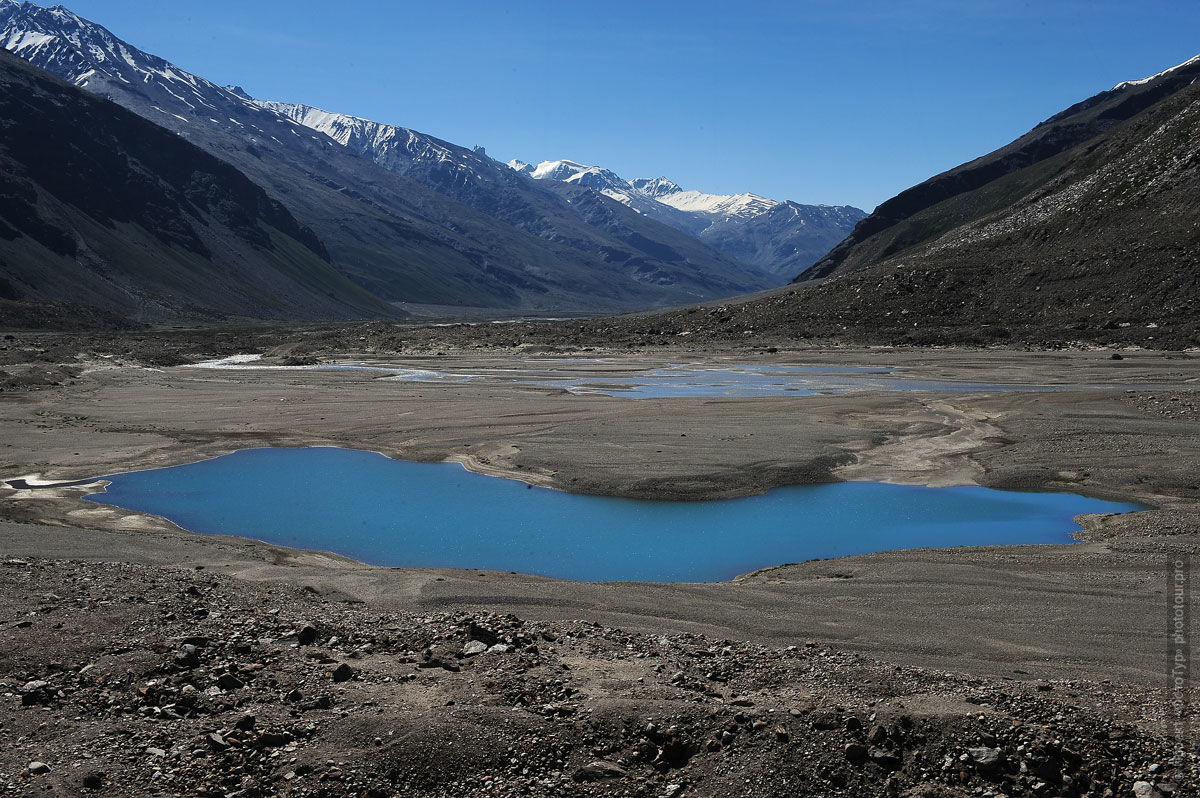
At 17-00 we arrive to Padum (3 669 m) – the capital of the Kingdom of Zanskar.
Stay in the hotel, have dinner and rest.
Some words about Zanskar.
Zanskar – is a really lost world, which lies in the heart of the Himalayas. This is the most inaccessible mountainous area in Ladakh.
Surrounded by high mountains, which do not give to get there for almost eight months of the year, this world holds the nations with the unique culture and traditions.
The only road to Zanskar starts at Kargil and passes through a beautiful valley along the Suru River, through the numerous Muslim villages, fields and orchards.
The majestic mountain peaks Kun and Nun are the highest in the region, they are opened for viewing near the village Tongul (Rangdum).
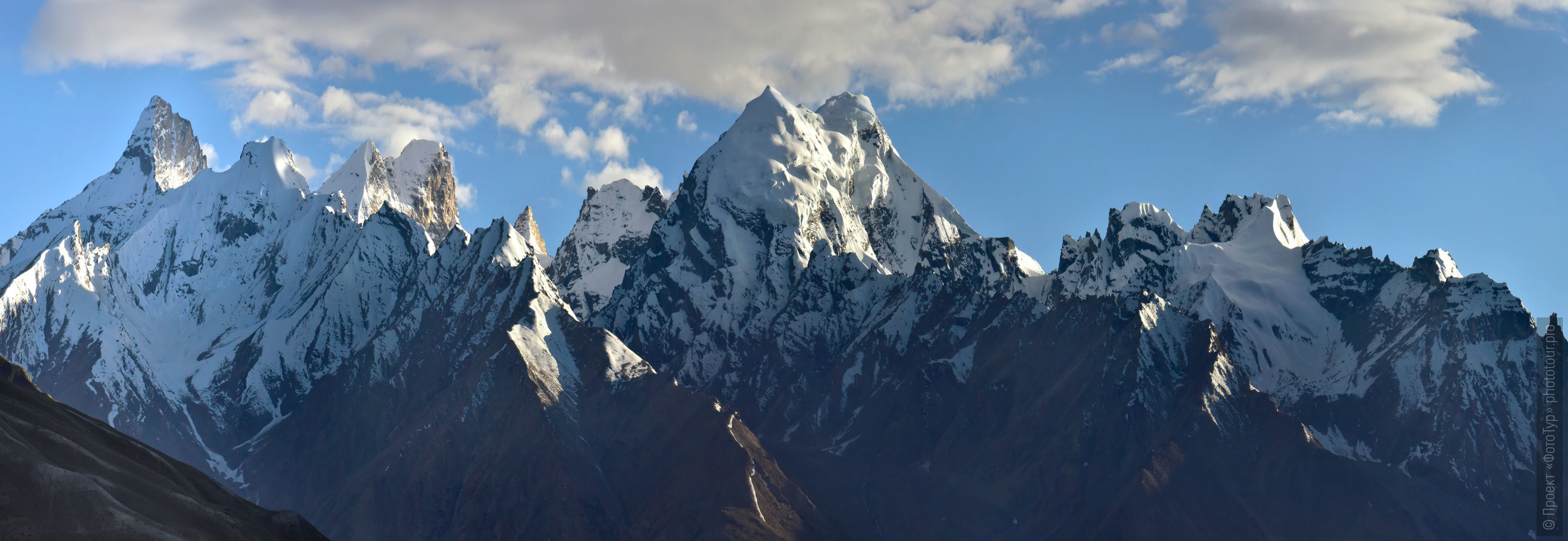
The population of Zanskar, with very few exceptions, are the Buddhists.
Sunni Muslims constitute a very small part of its total.
Most of nationalities living in Zanskar are Tibetan and Indo-European origin. This is Darda and Mona.
Taking into account the isolation of the area, its people have always had a tendency to self-sufficiency, while foreign trade was necessary for the acquisition of goods, which the locals could not do on their own.
The main occupation of the people is livestock breeding and cultivation of land, which is never enough.
Therefore, in Zanskar the sophisticated irrigation system is developed, in order to bring to the fields enough water.
Because of the shortage of suitable land for plowing, fertility and population in Zanskar is not great.
Historically system of marriage and family established here is polyandry - when several brothers are married to the same woman, it was due to maintain the population.
Buddhist monasteries in Zanskar are the important monastic centers. Some of them counts thousands years since foundation.
Here, deep in the Himalayas, they protect and preserve the purity of the ancient teachings of the Buddha.
In Padum - the capital and the largest city in Zanskar, local population is nearly a thousand people, about 300 people are Sunni Muslims.
Padum Valley - beautiful and light - are totally crazy light is always:
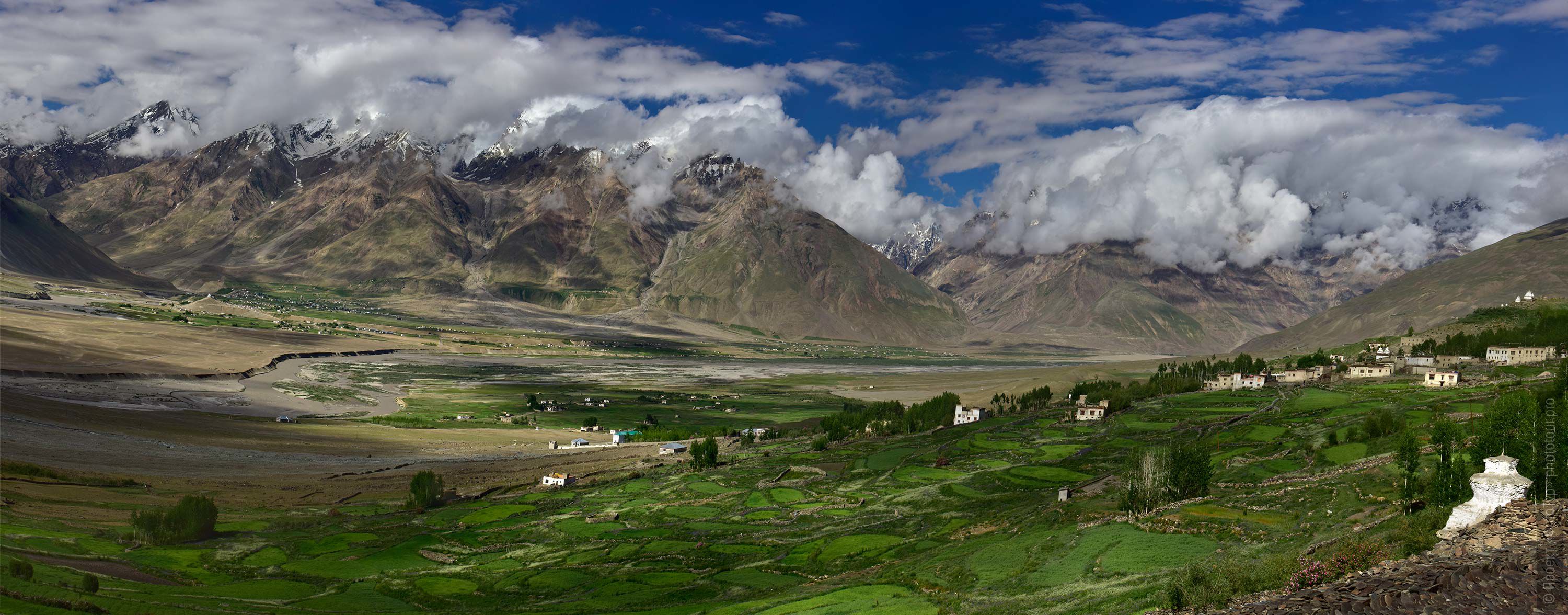
Hotel in Padum.
Days 6 - 7, July 22 - 23. Monastery Stongdey Gonpa. Buddhist mystery Stongdey Gustor, Cham Dance.
These two days we will spend at Buddhist mystery Stongdey Gustor in one of the most mysterious of all the monasteries of Ladakh and Zanskar - Stongdey Gompa.
Cham dance in Stongdey Gompa is incredibly beautiful and unusual: the tradition of mystery dates to the 8th century AD and Cham Dance usually is performed by lamas of high initiations, and the masks involved in mystery made 600 - 700 years ago.
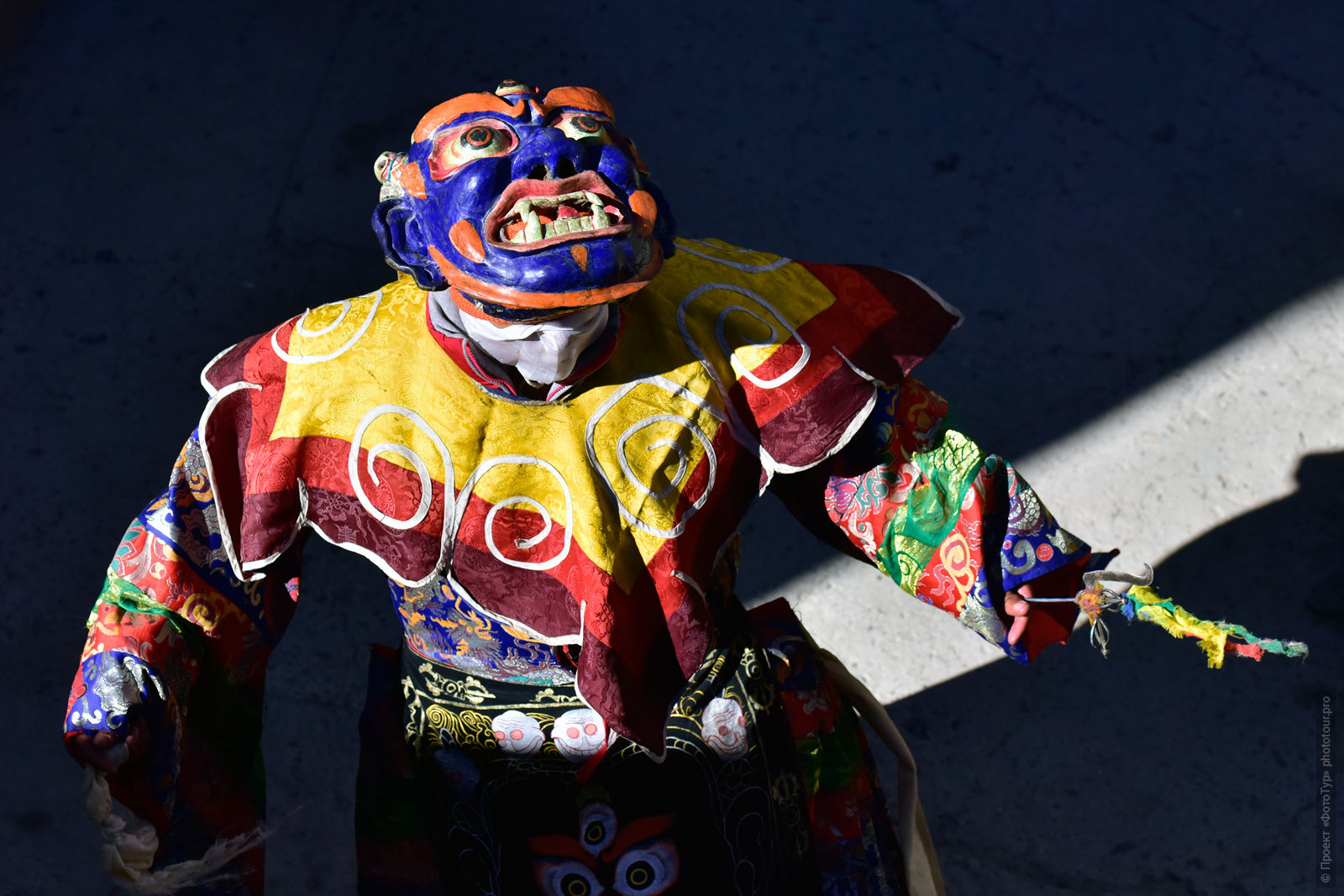
Monastery Stongdey gompa is considered as the second most important monastery of Zanskar and it's located in 18 km from Padum.
It was founded in 1052 by Lama Lhodak Marpa Choski Lodos and belongs to the Tsongkhapa school - the only monastery of this tradition in Ladakh and Zanskar, dating back to the ancient times.
It achieved the greatest prosperity with the assistance of Shakya Zangpo.
It is believed that the supreme priests of the monastery are the reincarnations of Nari Tulku.
There are seven temples with a magnificent mural paintings decorating the interior.
The monastery is managed by the younger brother HH Dalai Lama - HH Nima Rinpoche.
Stongdey Gonpa is located on the top of a mountain and rises above the entire valley of Zanskar, it offers spectacular views of the mountain ranges that protect Zanskar valley.
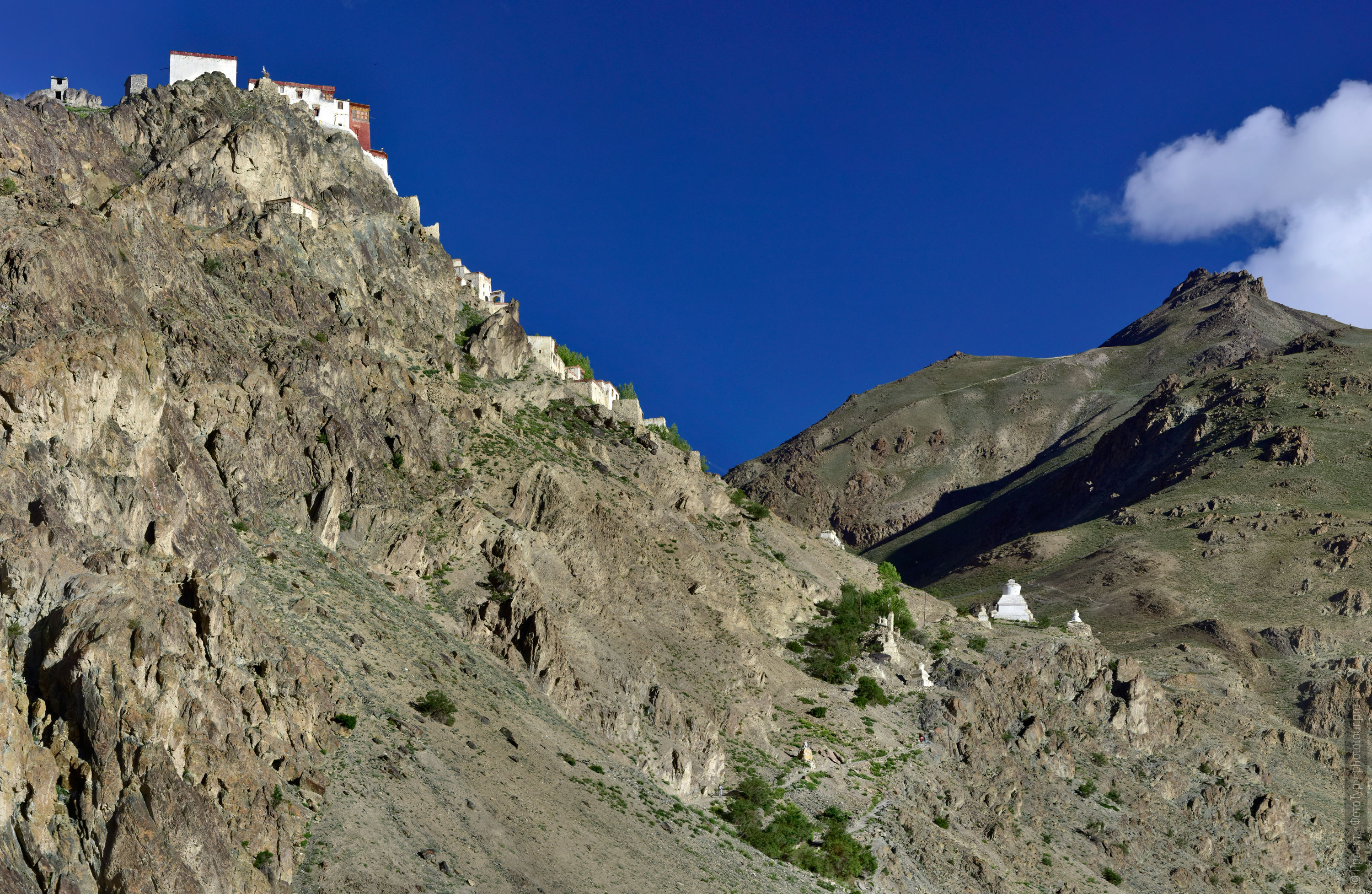
A large number of local residents visiting Mystery, as well as lamas and Nanary (nuns) from other Gompas of Zanskar, and there will be a lot of ethnographic photography, so these two days will be more than the intensely.
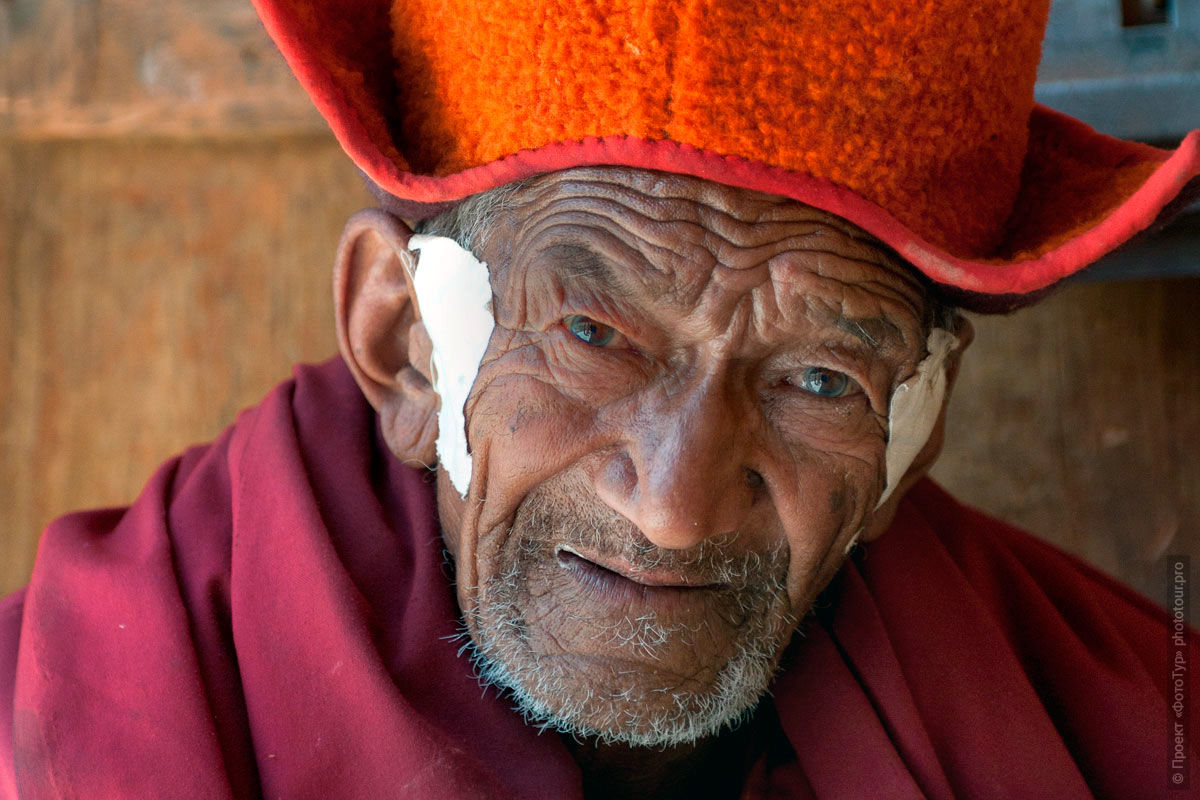
I would like to say a few words about women of Zanskar, they are amazing in their national dresses.
Women on the mysteries in Zanskar always look especially ornate: bright capes, embroidered with silver, leather ribbons on their heads are decorated with hundreds of pieces of turquoise.
Some of these stones were the size of a palm. Stones are not polished and look like pebbles. Although it is less valuable than the smooth blue-green afghan turquoise stones, but zanskars stones are beautiful too.
Hairstyles of ladies in Zanskar are worthy of special description:
Women plait their hair in a variety of braids (sometimes one hundred and eight - a sacred number) and put them on either side of the head.
Under the four braids at both sides of the head are two pieces of black karakul and it's look like dog ears.
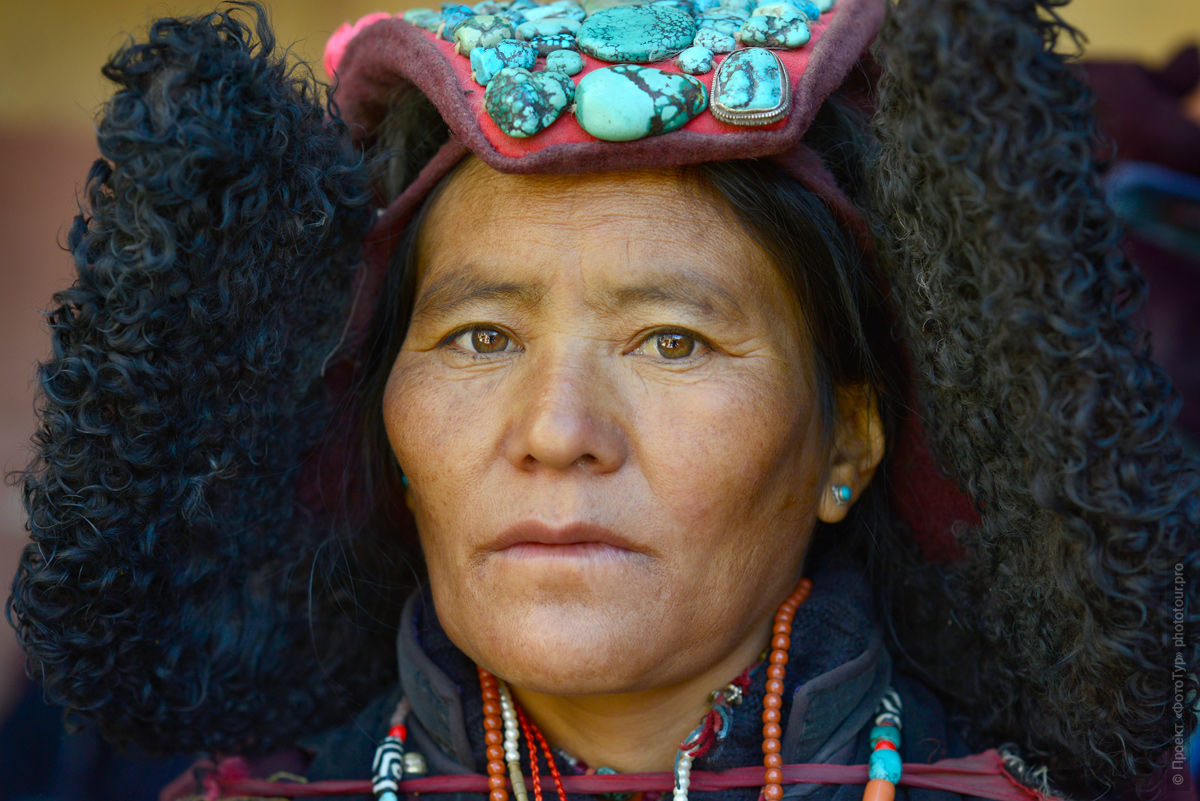
Then strip of leather from ten to twenty centimeters wide put on the head, and going down to the middle of the back.
This band is attached by rows of turquoise pieces. If a woman is rich, she has many stones and they are quite large. If she is poor, the stones are smaller, sometimes they are replaced by glass and pieces of coral.
This carefully designed hairstyle - Perak - is complemented by jewelry: small silver boxes, amulets, heavy silver earrings with turquoise, massive necklace of silver.
Some women put on the chest gold or silver rosary - round or rectangular boxes, containing sacred statues, prayers, amulets blessed by lamas.
By the way, the weight of the Zanskar women's headgear can reach 18 - 20 kg, and the weight of the total weight of the ornaments that dress on holiday can exceed 30 kg.
Note that this is at high altitude.
Monastery has the most magnificent views of the valley of Padum.

At the end of the day, on the back way to Padum we will have time for photographing in the valley of Zanskar.

Hotel in Padum.
Day 8, July 24: Free day in Padum.
Free day in Padum: rest from the days of intense photo shooting, get enough sleep, clean feathers and equipment, check up the shooting material.
The genre photographing on the streets and market in Padum.
For example, here are the ladies of all ages walking on the streets of the town:
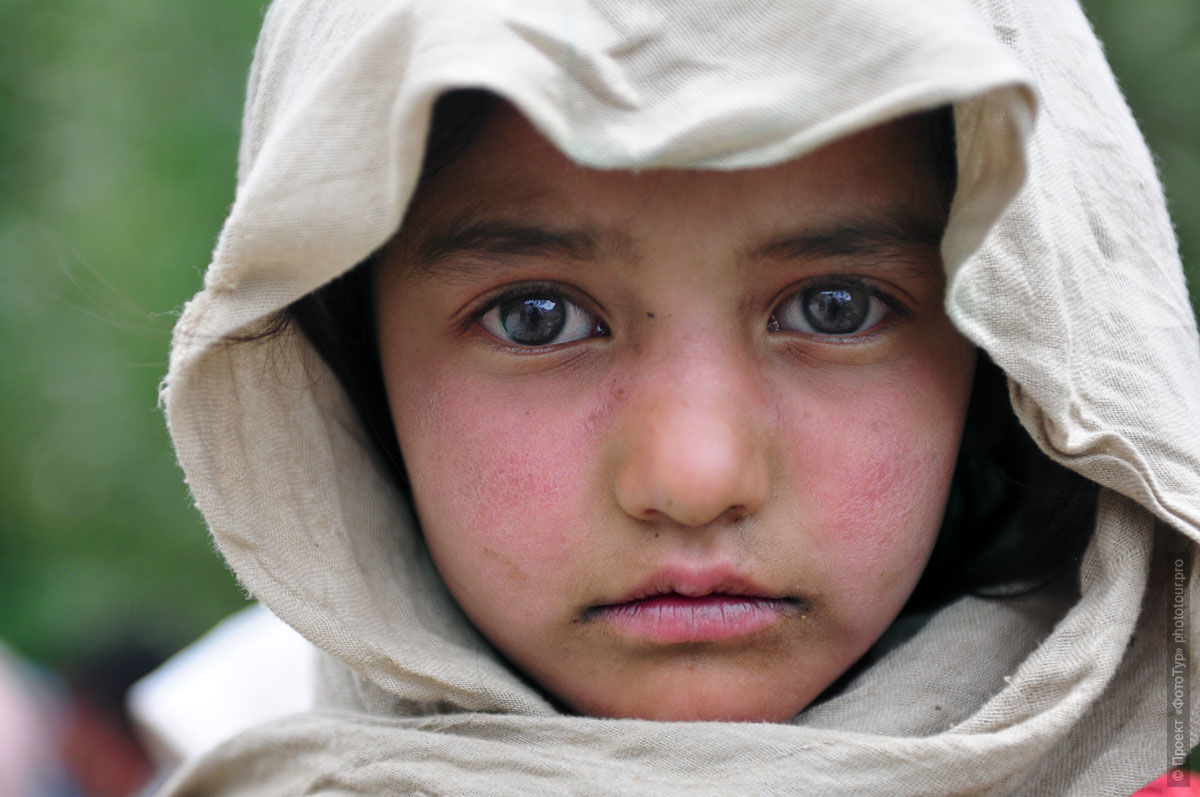
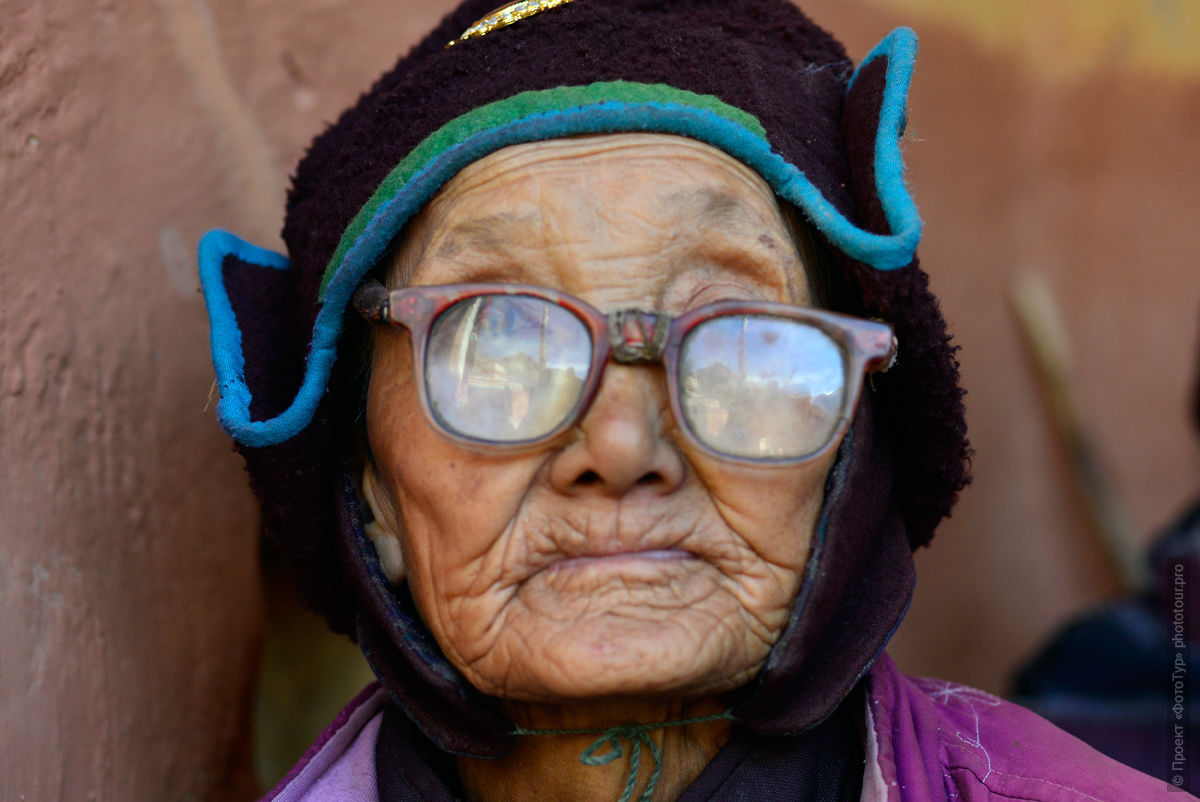
At a request we can organize a portrait photo shooting of Zanskari ladies in national dresses.
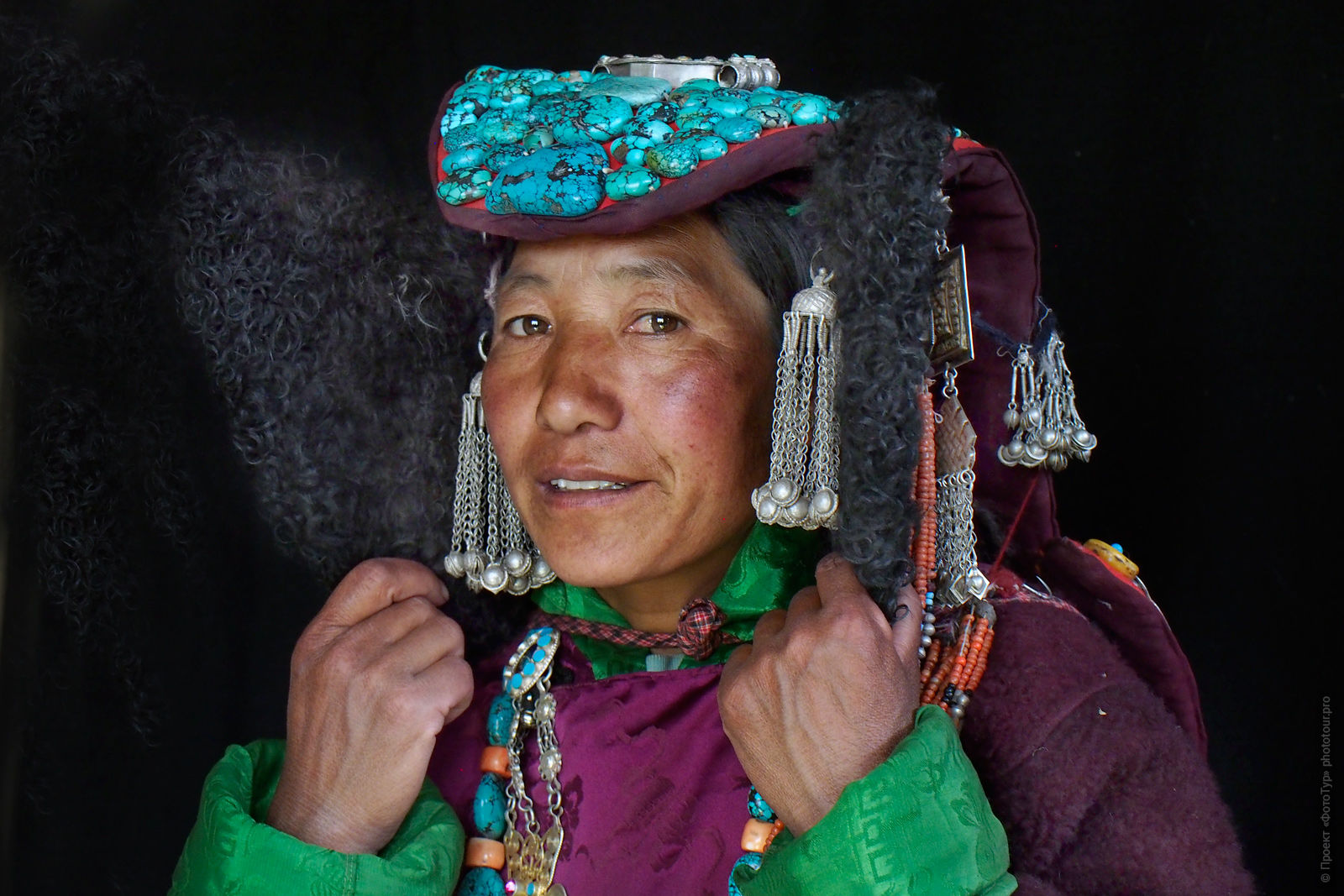
Hotel in Padum.
Day 9, July 25: Landscape photography on the track Padum - Rangdum.
At 4.00 am we go by already known road to the Drang Drung Glacier and glacial lakes for slow morning photographing.
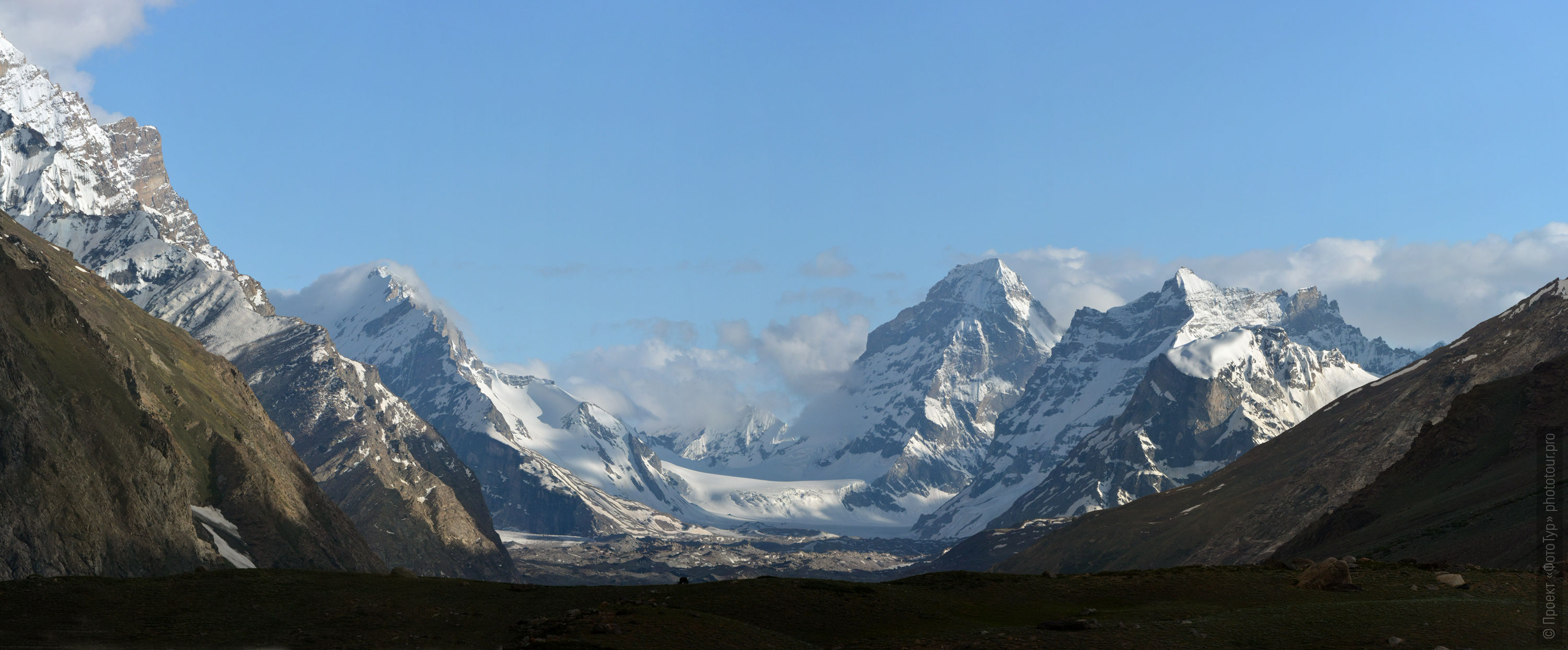
There will be a fantastic views all the day: a collection of alpine glacial valleys.

Drang Drung Glacier.
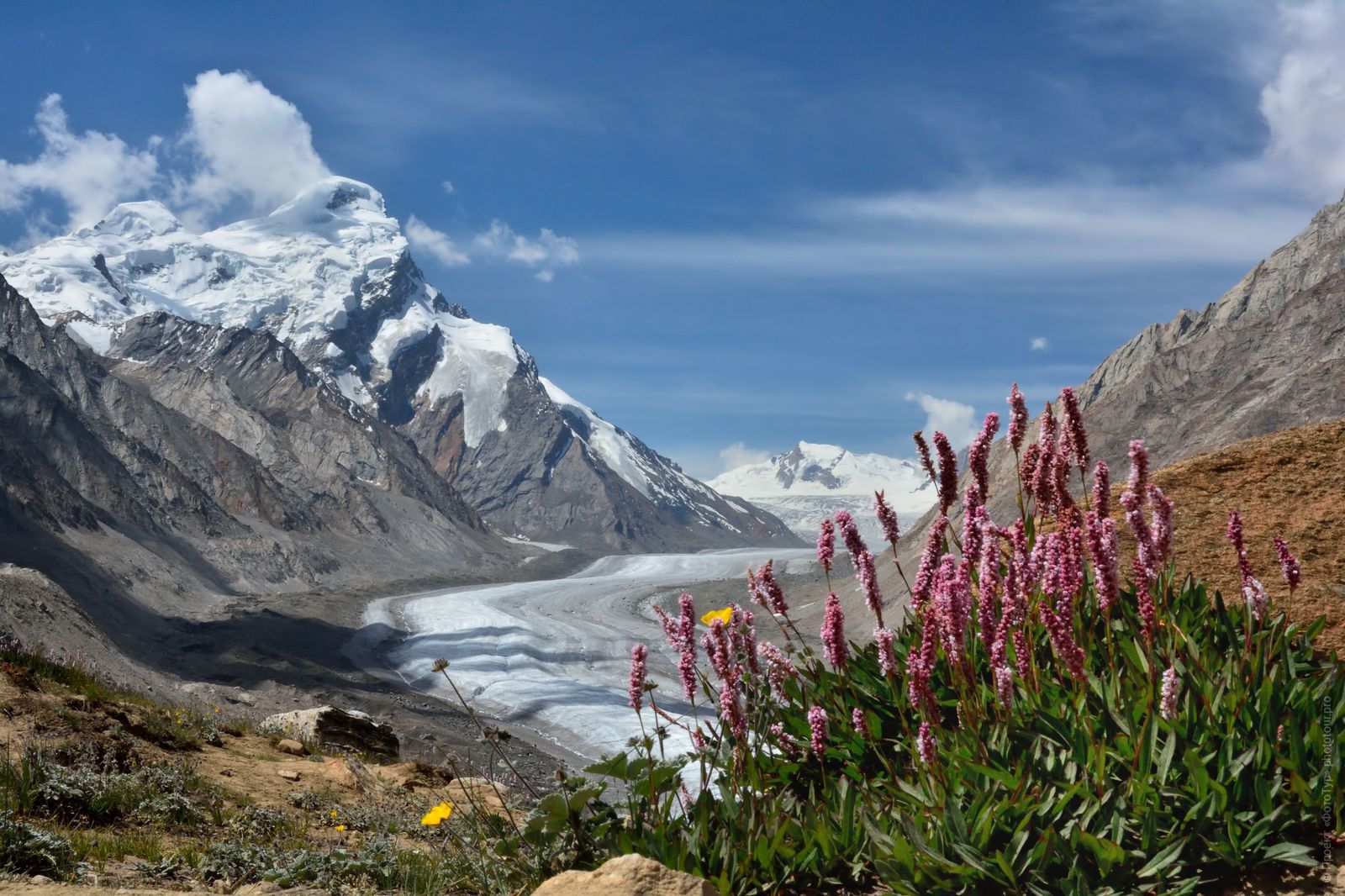
We go to a small trekking to the glacier lake near to the tongue of the Drang Drung Glacier.
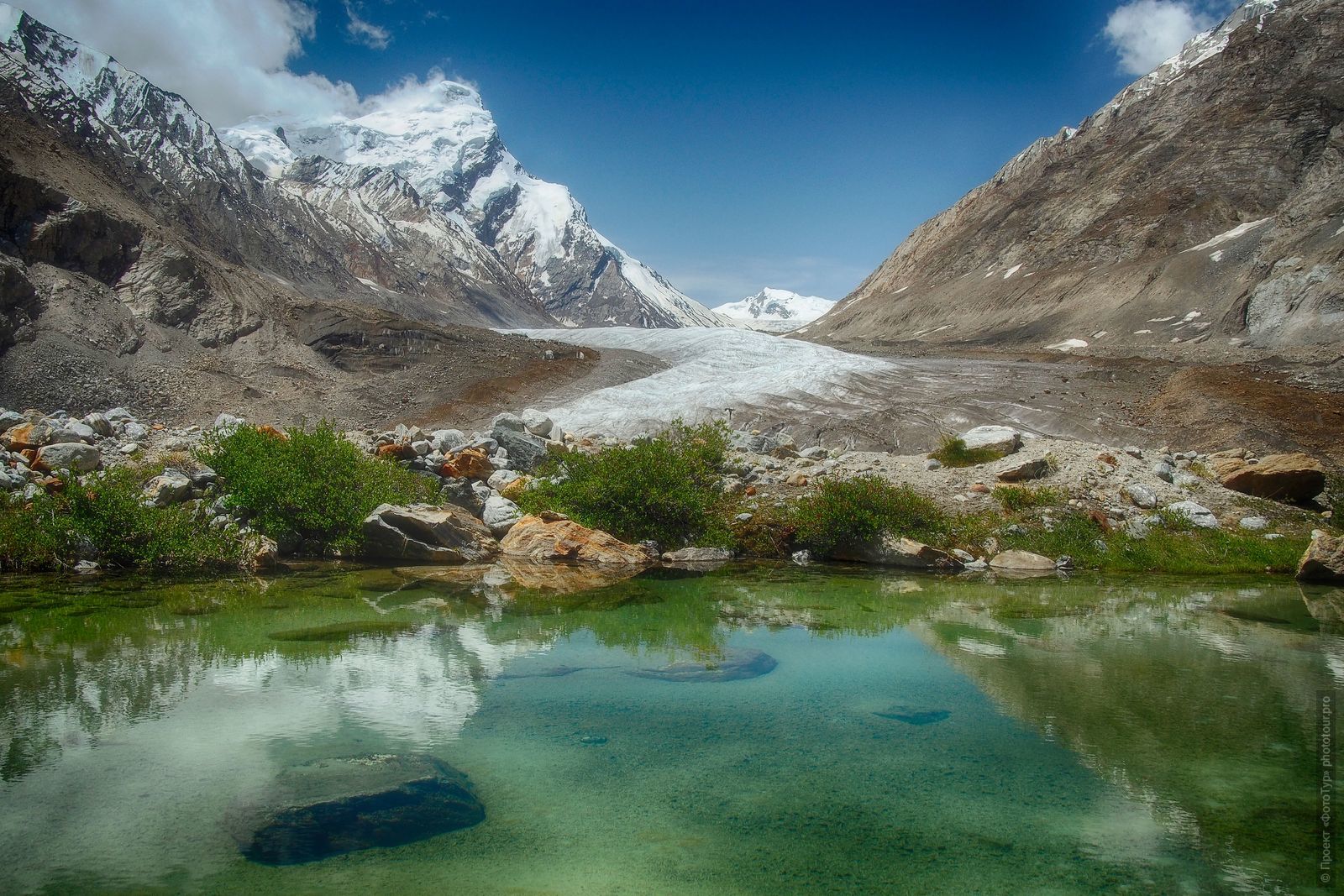
On the way we visit a village of nomads: herds of yaks on the green lawns in the mountains, the nomad yurts.
We may be able to observe and photograph shepherds making cheese from dri milk and taste of this cheese.
Dri milk itself, usually do not drink: it is very fatty and in consistency rather resembles cream.
By the way, do not forget to take a macro lenses: There are a huge number of flowers of all shapes, colors and sizes in Zanskar, and a macro shooting here is a great pleasure.
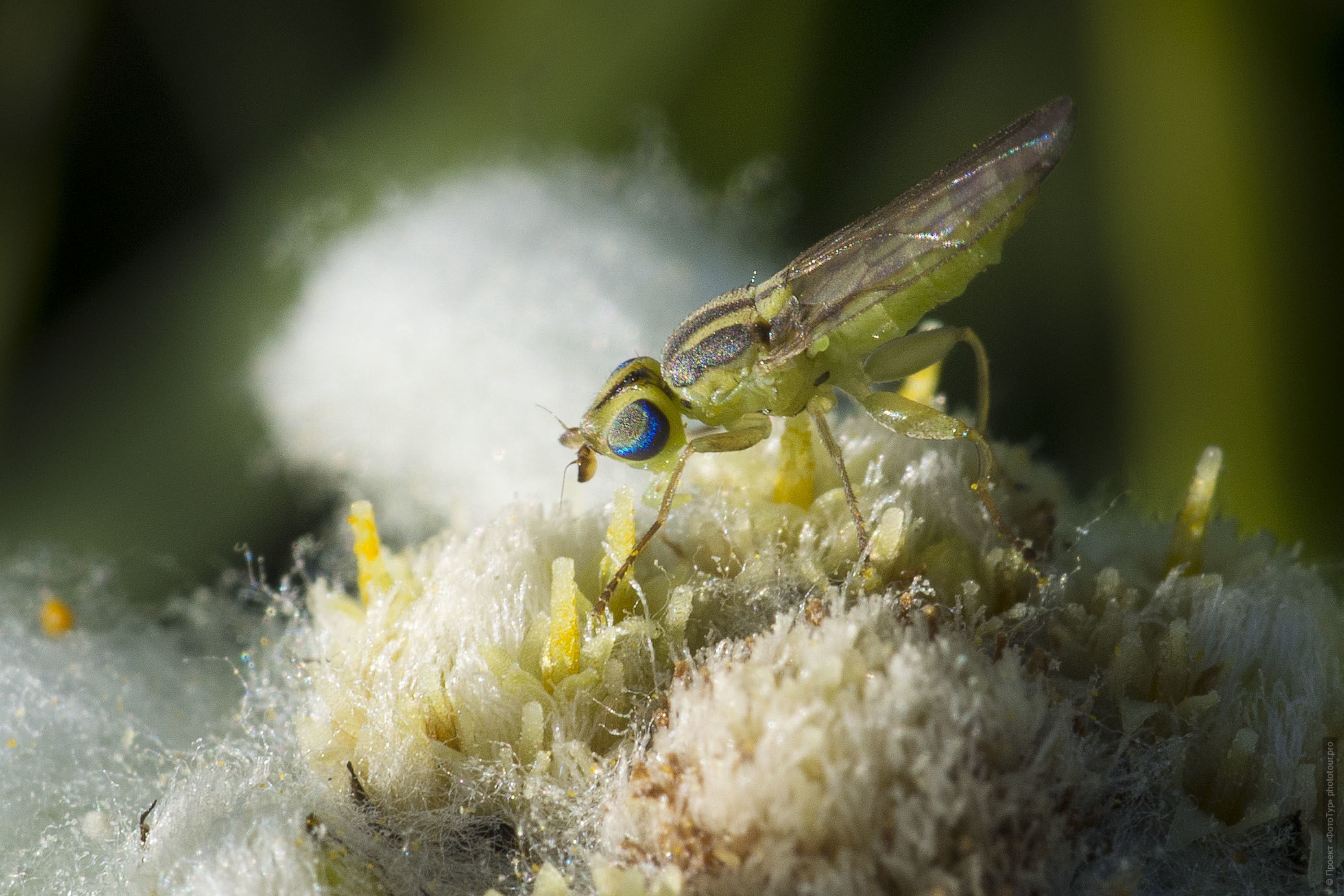
Hotel in Padum.
Day 10, July 26: Valley Zangla. Zangla Gonpa monastery. Palace of King of Zangla. Zangla village.
In the morning we go to take photographs in the picturesque Zangla valley.
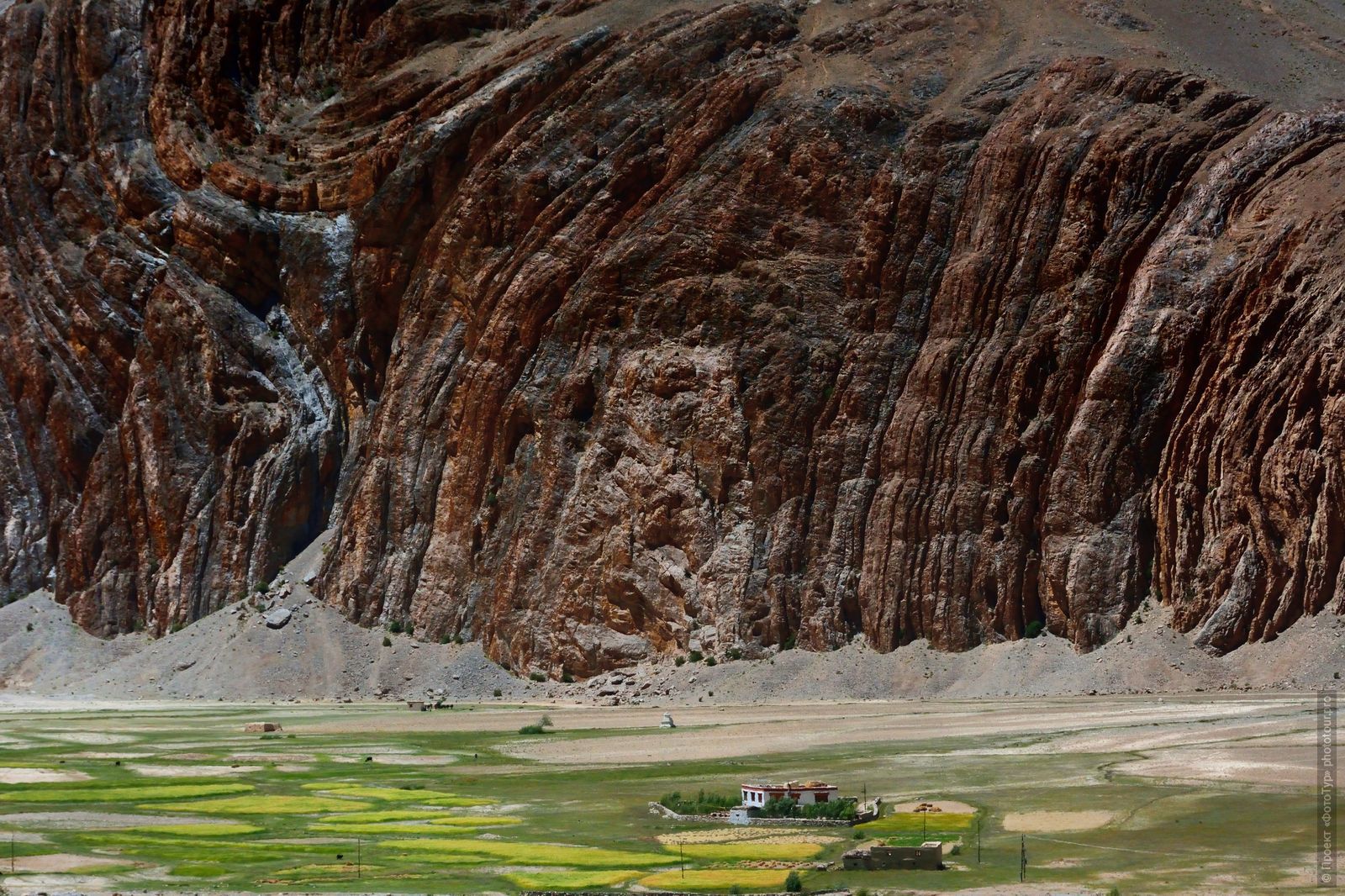
We will spend the whole day in the valley: the extraordinary form of weathering, the folds of rocks in the shape of flowers of unusual shapes, canyons along the streams and rivers of the valley.
This day we will also visit the Zangla Gonpa, nunnery in the Zangla village, and if we're lucky, get the audience with the king of Zangla.
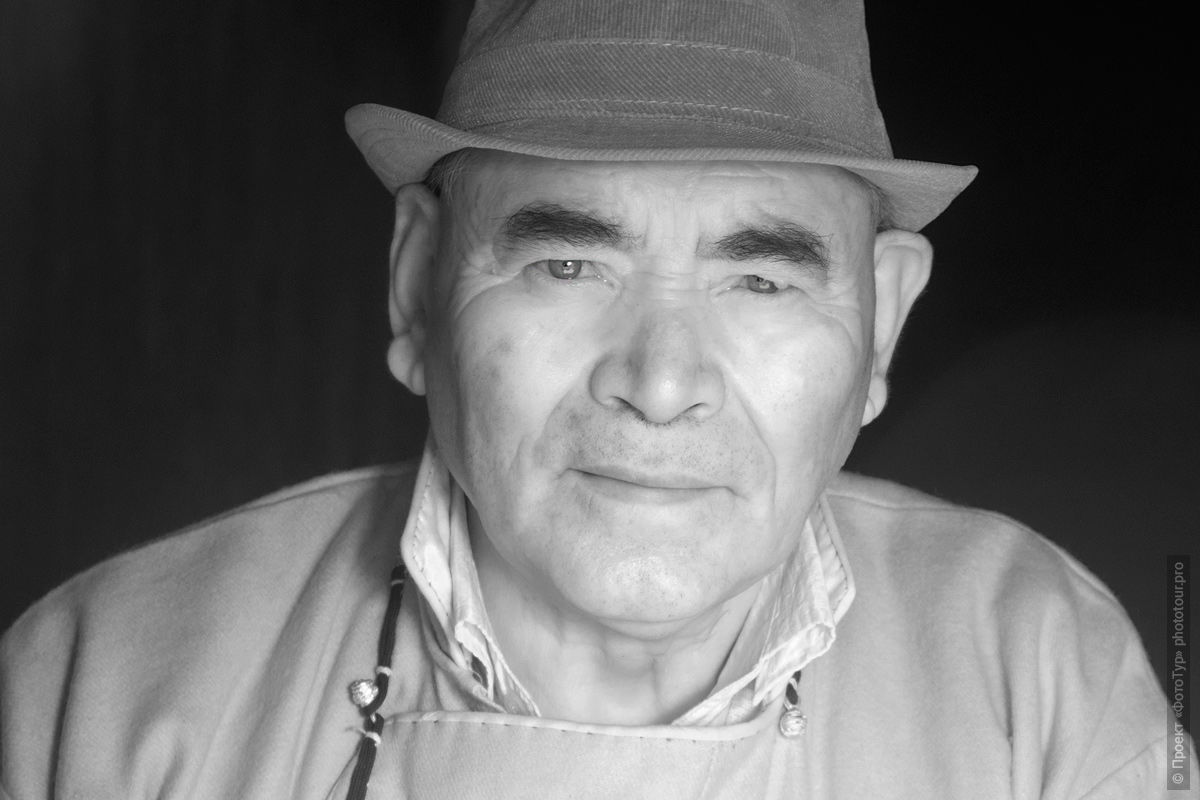
Zangla Gompa is an ancient monastery situated over the abyss, there are the ruins of the nunnery and the old castle near this place.
In 1823, the famous orientalist, philologist, author of the first Tibetan-English dictionary and translator of Buddhist texts Shandor Kerёshi Choma lived and worked here.
Hotel in Padum.
Day 11, July 27: Padum- Muni gonpa. Muni gonpa, Bardan gonpa.
Early in the morning we will go up the canyon from Padum to Buddhist monastery Muni gonpa.
The places are fantastic and it is impossible to give a description to the landscapes of Zanskar with words.
Muni (Muney) gonpa – is one of the distant places of Zanskar, and it is not described in any guidebook.
The monastery belongs to the Gelugpa school, it was founded in the 12th century.

There is a school for young lamas at Muni gonpa, and we visit it if we are lucky.
There are unusual murals and wall paintings in Muni gonpa, but we discuss it inside.
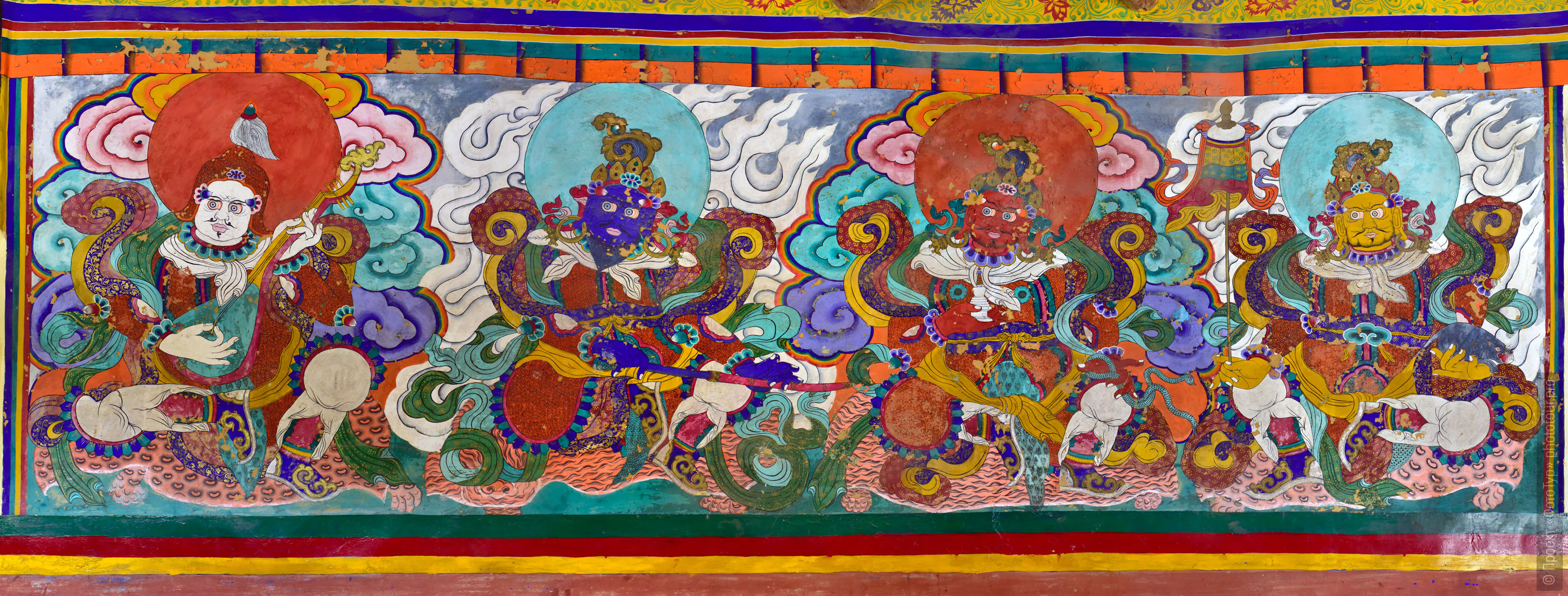
On the way back we visit Bardan Gompa Buddhist monastery, situated on a cliff above the river.
.jpg)
Hotel in Padum.
Day 13, July 28: Zongkul gonpa and Sani gonpa.
This day we will visit buddhist monasteries Zongkul gonpa and Sani gonpa.
Monastery Zongkul (Dzonghul gompa) is a cave monastery, facing the gorge Atingi.
Zonkul is associated with the name of Naropa, who, as believed, have used two local caves for meditation, he left an imprint of his feet on the rock, and in one of the caves exists a sacred spring.
After that, the monastery became the most revered by yogis and all mahasiddhas of Zanskar considered it their duty to spend there their meditation.
Such enlightened masters as Dubchen Kunga Gyatso, Nawang Tsering Dubchen, Tsapda Dorje Karmapa, Kunga Choslang meditated here.
The monastery contains a unique artifacts, including ivory image of Samvara, crystal stupa, sacred manuscripts with texts of prayers and spiritual songs, information about outstanding mahasiddhas.
Gonpa is decorated with magnificent frescoes, executed by Zhadpa Dorje three hundred years ago.

On the way back to Padum we visit a buddhist monastery Sani gompa.
Sani gonpa – is the oldest in this region.
Gompa is not on a hill or mountainas as it is accepted, but in the plain, like a castle.
Near the gonpa there are the ancient poplars - a rare phenomenon in the treeless Zanskar.
Sani Monastery was founded in the VIII century, according to legend, by Padmasambhava, and is also associated with the name of Naropa, who is believed to have meditated here.
Sani Gompa belongs to the school of Tibetan Buddhist Drukpa Lineage and considered as the oldest religious building of Ladakh and Zanskar.
It is the only monastery in Ladakh which is allowed to live nuns.
There is a temple in the gonpa with beautiful frescoes and Kanika Chorten, whose name have comes from the of the legendary Indian king Kanishka, founded an empire with the borders from Varanasi to Afghanistan.
The Sani Gompa also has an ancient cremation box for particularly important cases, where fitted stones with carvings made in Indian style.
This is one of the eight most important fields for the cremation of Tibetan Buddhists.
From time to time, the monks of Sani Gompa, at the request of local residents boiled in a cauldron heads of goats and some other offerings from local residents. Skulls of goats given to the villagers and they hang them in front of the house as a talisman.
And even in this sketchy description it becomes clear how unusual place is Sani Gompa.
Back in Padum. On the road - evening photographing.
Hotel in Padum.
Day 14, July 30: Distant villages of Padum Valley, Zanskar.
We will have a lot of ethnographic and portrait photography of local residents from the original villages.
And, of course, landscape photography.
All the day we spend in a distant, inaccessible villages of Zanskar.
Maybe we'll get lucky and we will visit a wedding or a large puja in one of the villages of the valley of Padum.
Hotel in Padum.
Day 15, July 31: Free day in Padum.
Free day in Padum: we relax after a high-altitude tracking, gaining strength before two days of intense shooting at a Buddhist mystery in Karsha Gonpa.
If you wish - genre photographing in Padum.
Or you can walk to the nearest gonpa in Padum and calm and leisurely shoot monastery still lifes:
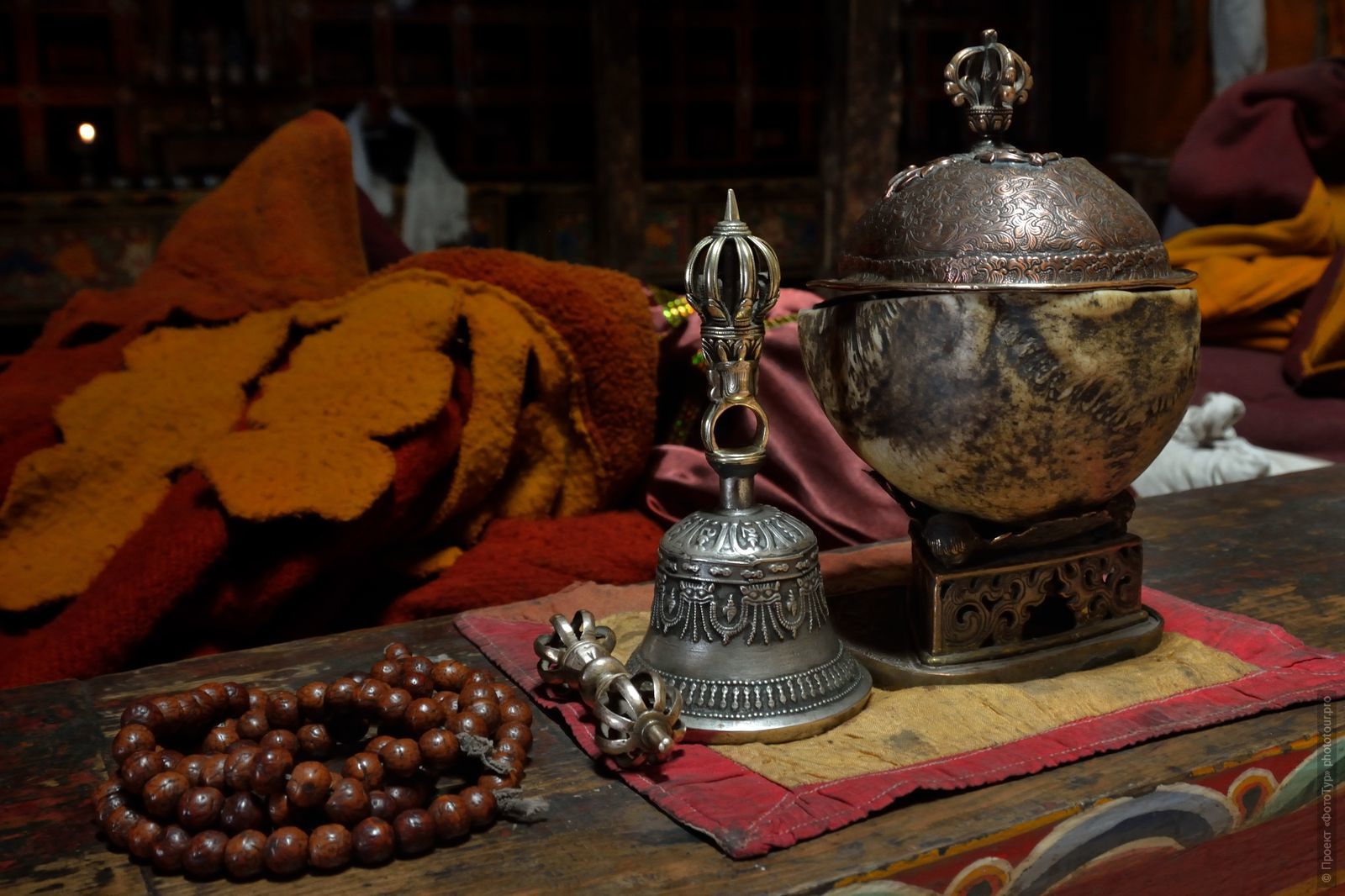
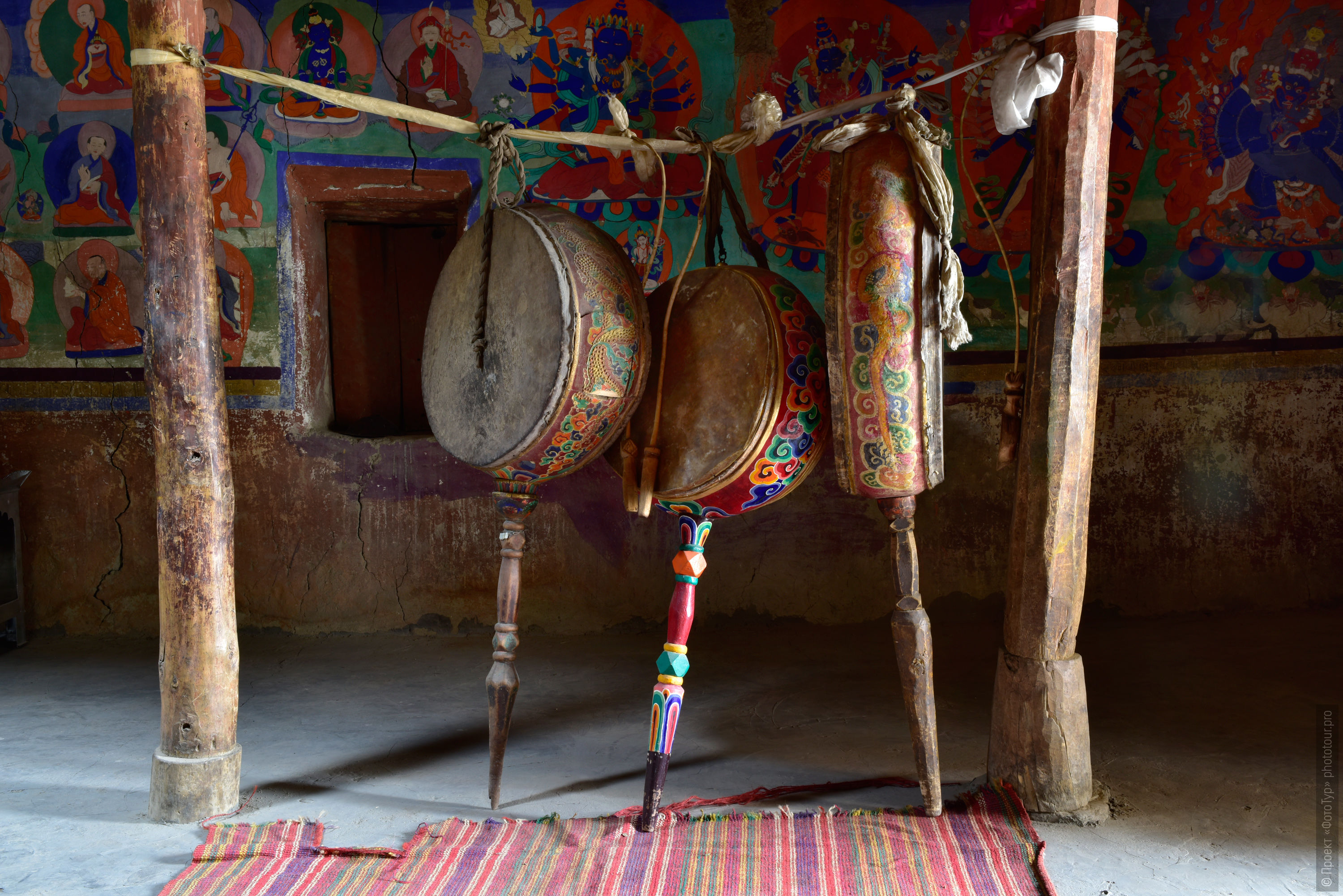
Hotel in Padum.
Days 16-17, August 1-2: Monastery Karsha gonpa. Buddhist mystery Karsha Gustor, Cham Dance.
Two days we spend at very rich, fantastically enchanting Buddhist mysteries with the performance of Cham Dance and sacrifices in the Monastery Karsha Gonpa.
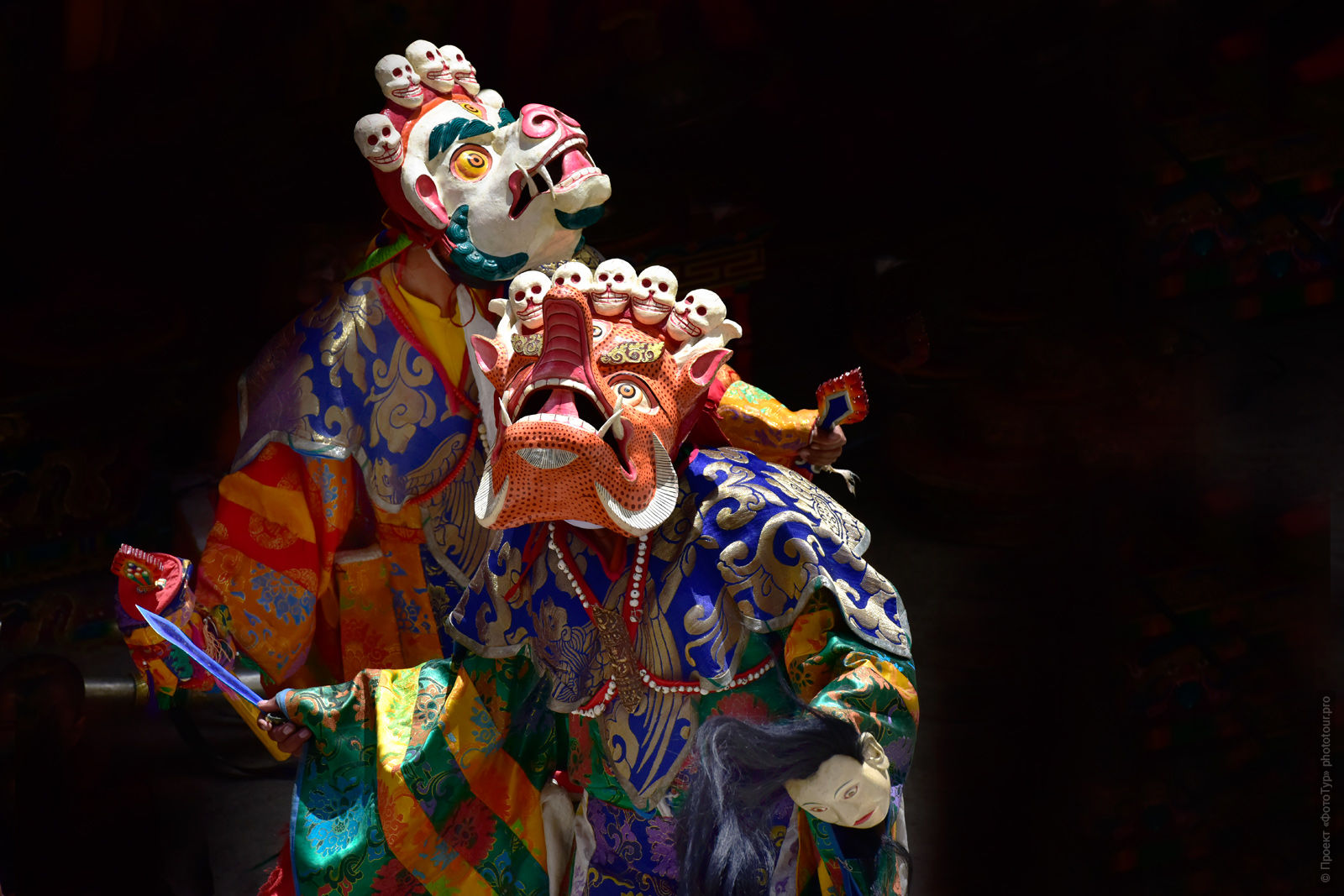
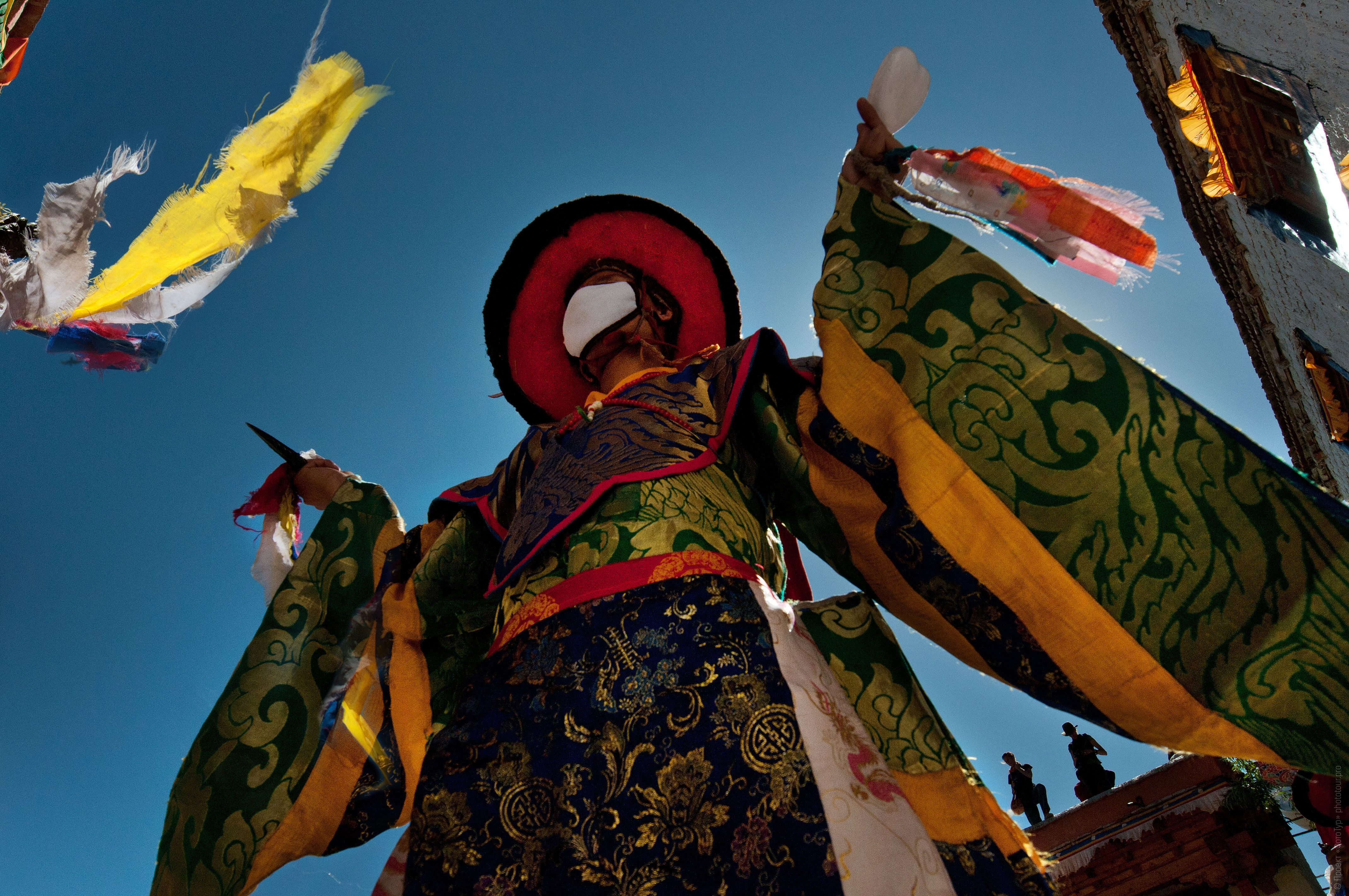
Karsha gompa or Khurcha Gompa - the largest monastery in Zanskar, according to legend it was founded by Saint Guru Rinpoche Padmasambhava in the X century.
Belongs to the Gelugpa tradition. It is home to a large community of monks - about 150 monks, there are numerous shrines and relics, including the magnificent tangkas painted with gold. Also there are remarkable 700-year-old frescoes which are close to what we saw in Alchi.
The monastery has a mural painting made by Lama Dzadla Dorje, Rinchen Dorje relics and the statue of Lhasa Cho Rinpoche removed from Lhasa after the Chinese invasion of Tibet. The statue has a golden crown, and it is adorned with turquoise and carnelians.
There are relics of Rinchen Zangpo in chorten near the monastery, according to the monks.
By tradition, a younger brother of the Dalai Lama - HH Nima Rinpoche manages the monastery.
At its core, Karsha Gonpa is a rock town-monastery.
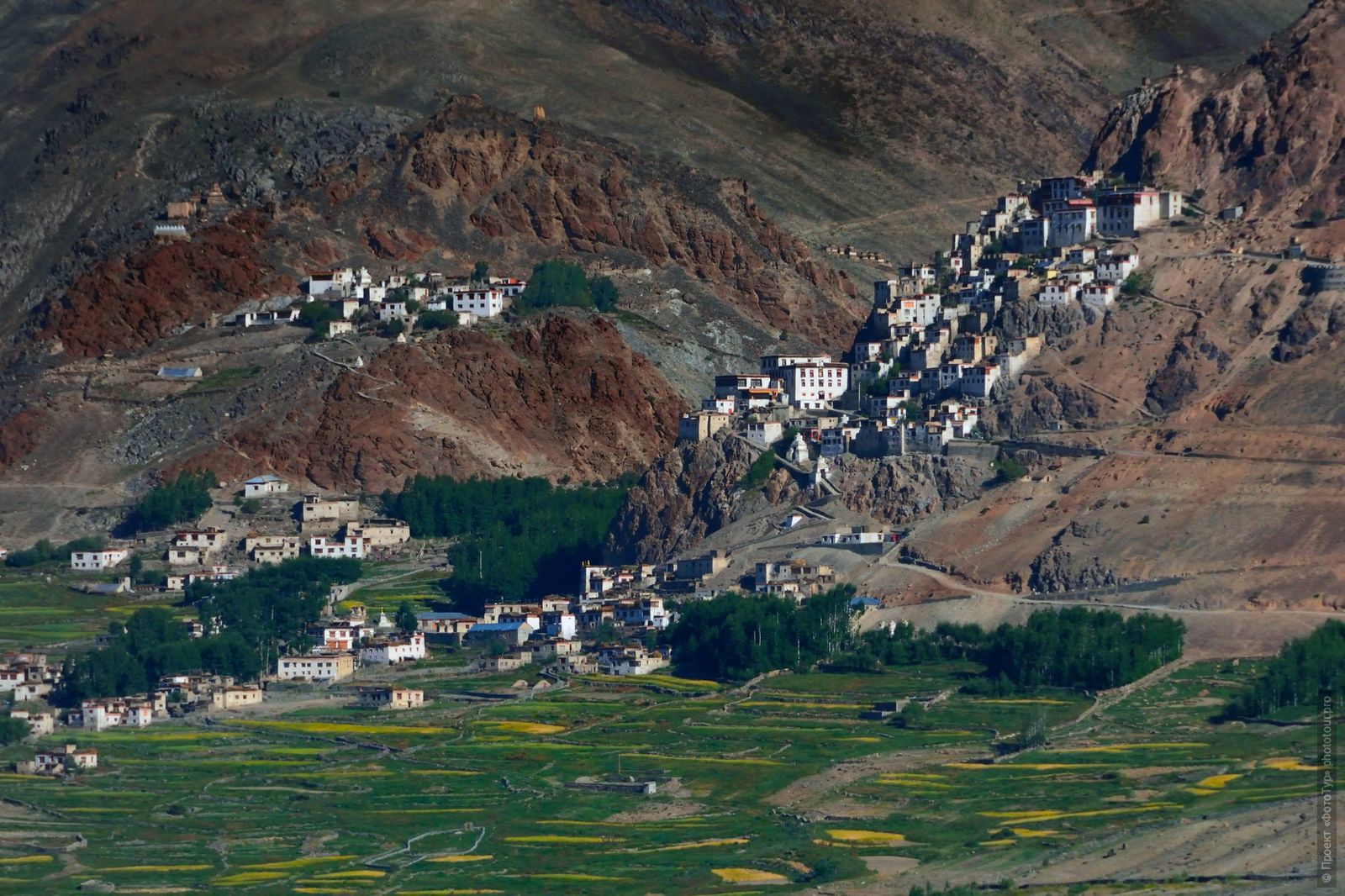
Again, these days we will have a lot of portraits and genre photography, including photographing of young lamas: there is the largest school in the Zanskar for young lamas in Karsha Gonpa.
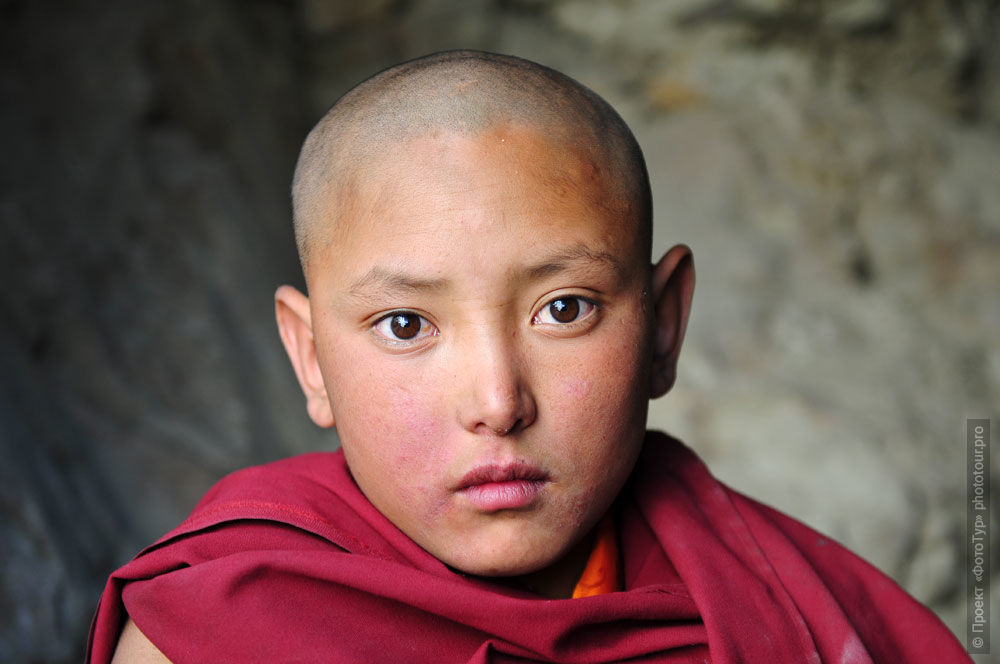
Hotel in Padum.
Day 18, August 3: Padum-Kargil.
We go way back to the familiar road.
On the way, as usual, numerous stops for landscape photography.
In the evening we arrive in Kargil.
Guest-house in Kargil.
Day 19, August 4: Kargil-Leh.
Early in the morning we drive towards Leh.
On the way over the pass Fotu La we stop for a lunch at Lamayuru Gonpa.
While the dishes from the menu will be prepared, we go on a little walk around the Lamayuru Gonpa.

Buddhist monastery Lamayuru Gonpa (Yungdrun - this is a sign of the swastika) is one of the earliest monasteries of Ladakh, the construction is credited to Rinchen Zangpo (958-1055).
The monastery was founded in the XI century by famous mahasiddha Naropa, after the meditation in a cave during several years.
The monastery is named after the plantation of the sacred grains, which mysteriously took the form of a swastika (swastika moving on the left side symbolizes Yungdrun Bon or New Bon).
Now Lamayuru Monastery belongs to the direction of the Buddhist Drikung Kagyu school, however, and for a long time has been a refuge for followers of the Bon religion.
Near 16.00 we arrive in Leh.
Packing, if desired - buy gifts and souvenirs from Ladakh for relatives and friends.
Hotel in Leh.
Day 20, July 18: Leh - Delhi (flight).
Morning transfer to airport for flight Leh - Delhi.
Remaining time in Delhi, depending on the time of departure to the homeland, you can either spend time at the international airport in New Delhi, or book a tour in Delhi with English-speaking guide.
Evening flight from Delhi International Airport.
ATTENTION PLEASE! READ CAREFULLY:
The marker of this Photo tour in Zanskar is EXTREME.
Most of the time in the photo tour in Zanskar we will spend at altitudes of 3500 m and above.
The compulsory condition for participating in photo tour to Tibet is the level of health not below average, lack of chronic diseases, such as:
diseases of the cardiovascular system, asthma, mental illness, drug and alcohol addictions.
And the most important thing:
the full awareness - where you are going and willingness for difficulties.
We will try in every way to make this trip as much comfortable as possible for the participants of the photo tour in Zanskar, but emphasize:
Zanskar is the most distant and difficult region of highlands of Ladakh.
I.e. ideas of comfort in Zanskar in terms of European are absent altogether.
In addition it is assumed that we live not only in hotels but also in local guesthouses and campsites, as well as a photo tour includes four days of active tracking in the highlands.
Yes, the tracking is designed for photographers and will be held with a group of support that fully take over the care of the luggage transportation, the installation of camping, cooking.
From our side we will try to organize this Zanskar photo tour as comfortable as possible for the participants: experienced drivers will work in the tour, they know how to adapt to the requests of photographers, the movement of the whole route photo tour is in the comfortable high-cross vehicles.
Our tibetan friends accompany tour, including Tibetan lamas who help us to get to the most distant places.
We will try to organize the time for the rest with the best possible comfort for those places.
Therefore, wishing to take part in a large photo tour in Zanskar should be ready for the objective difficulties of our Photo Tour:
- There will be many long journeys at altitude above 3500 m,
- A little time for passive recreation, but there will be a lot of very unusual photography - the ethnographic and landscape.
- There will be many events, including those that we can not plan ahead, for example, Lamas of high initiation always visit Cham mystery, and if we have good karma - we meet with Rinpoche (conscious reincarnations), with oracles.
So this tour to Tibet will be very busy informationally and emotionally .
- in distant provinces the conditions of staying will be quite modest, although the experience of previous photo tours in Tibet shows that the participants care about this point less.
- Intense emotional experience, very saturated photo tour program, a lot of moving, a lot of shooting.
- Non-European level of the quality of housing.
- Poor infrastructure in the region, local perceptions of comfort.
- Possible manifestations of altitude sickness in the first 1-2 days of photo tour.
If you decide to take part in this photo tour to Zanskar - You need to be internally prepared for the fact that at times it will not be easy, but infinitely interesting.
